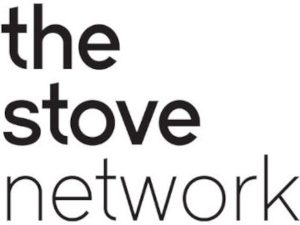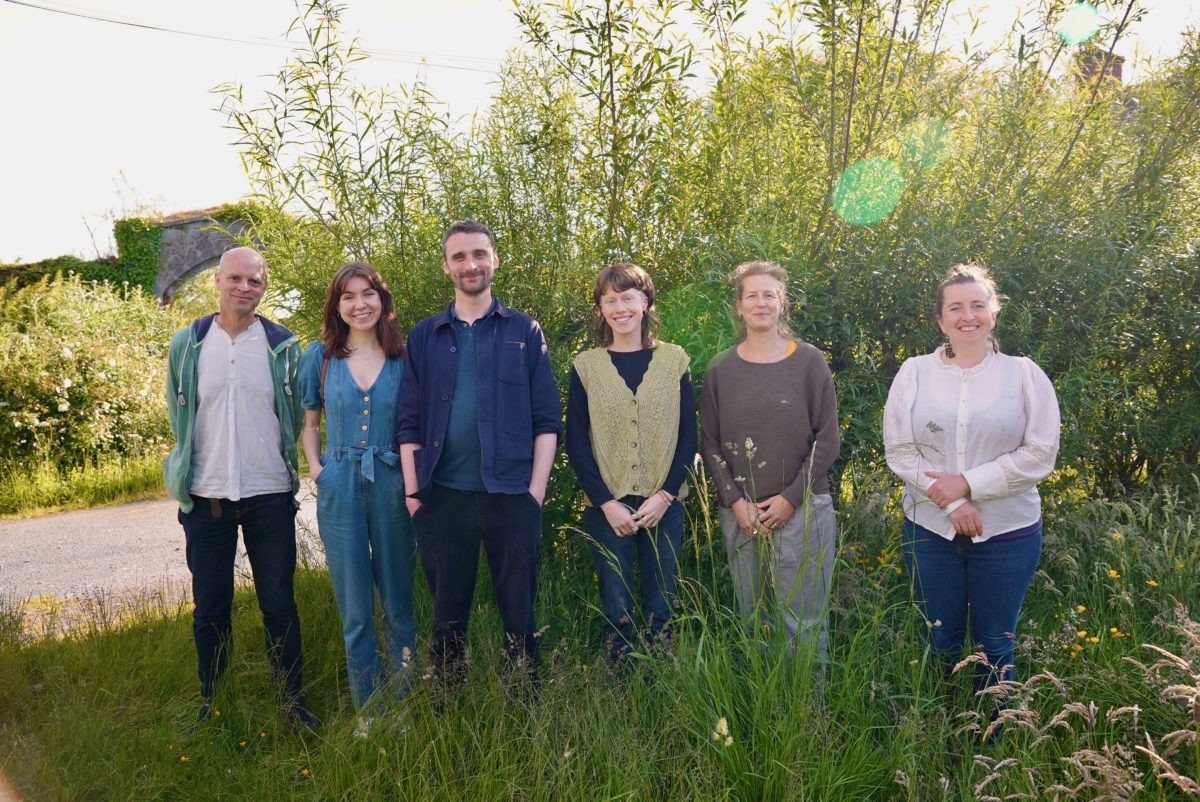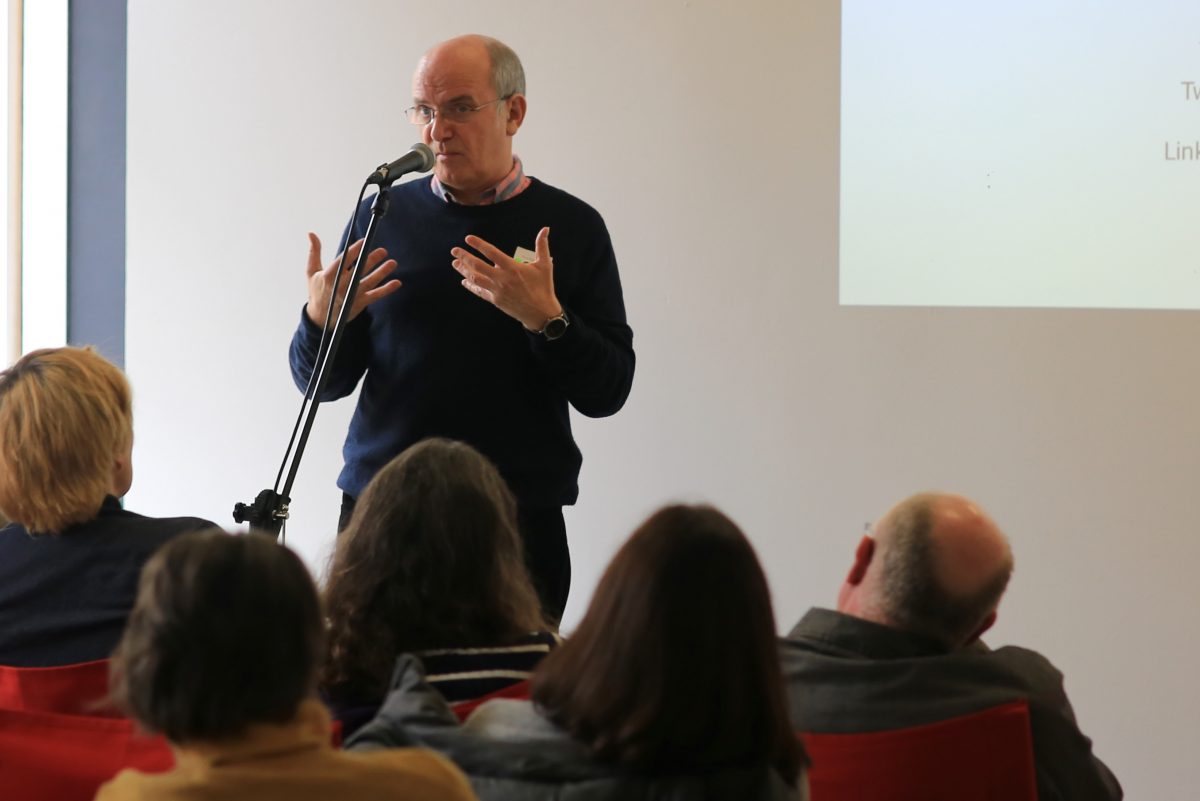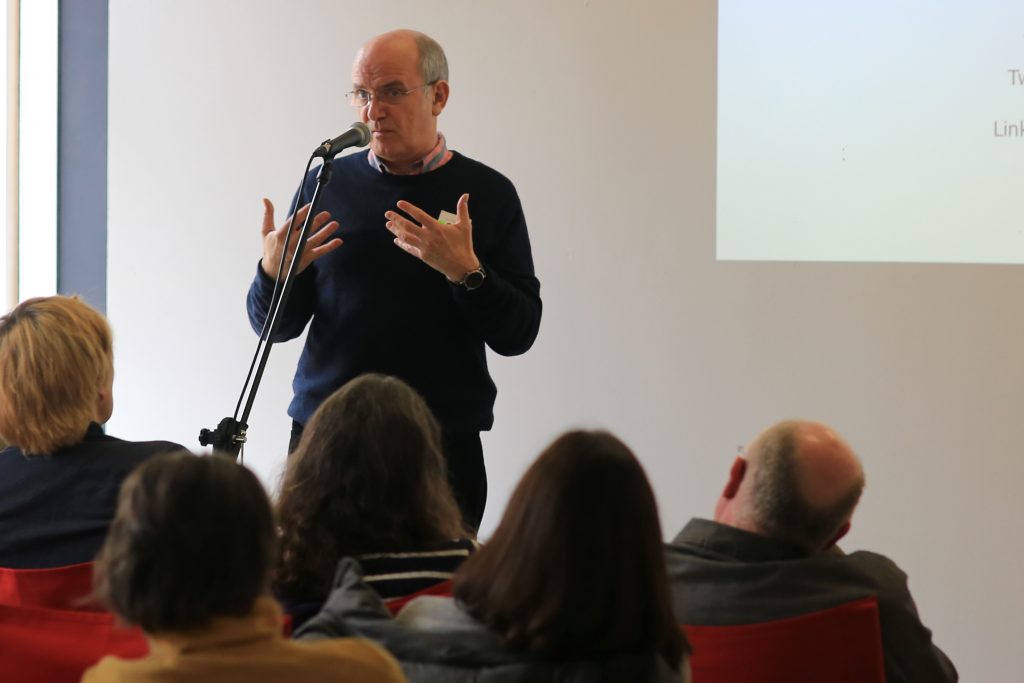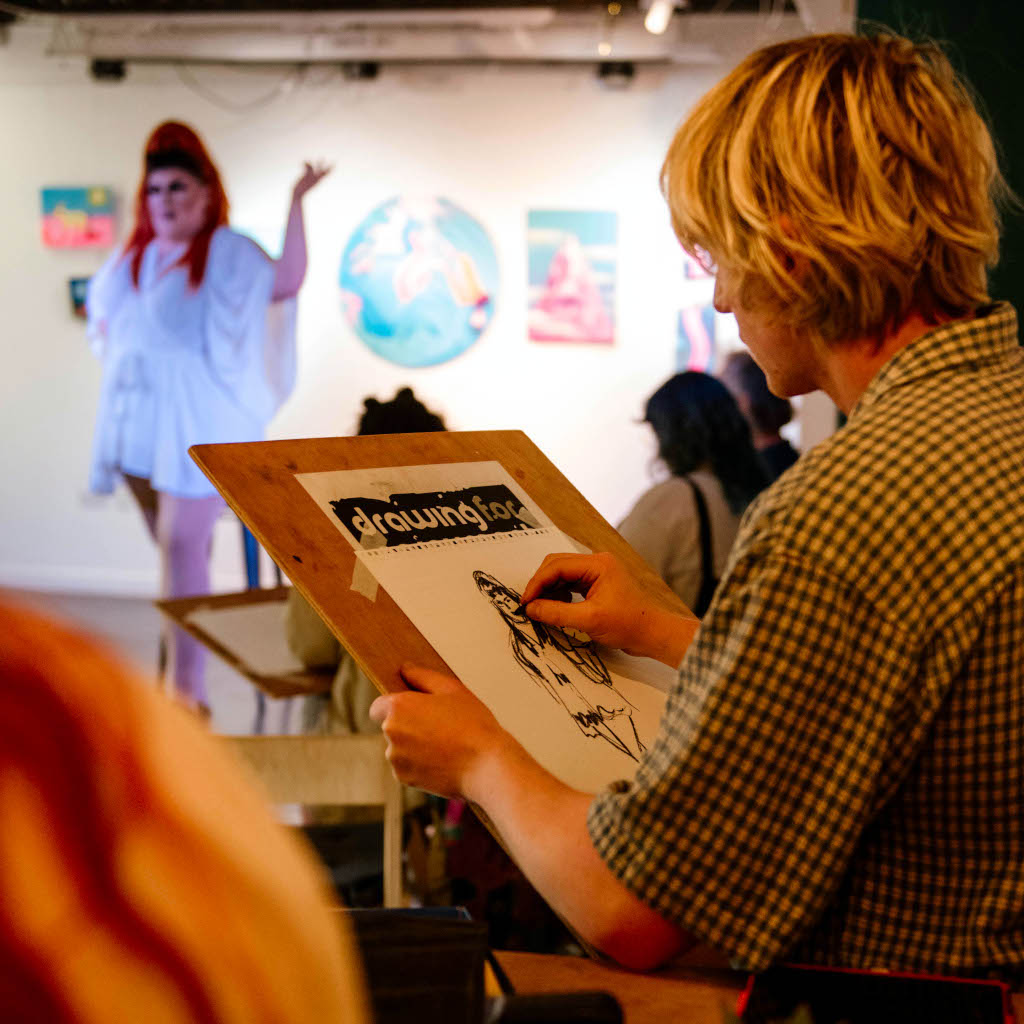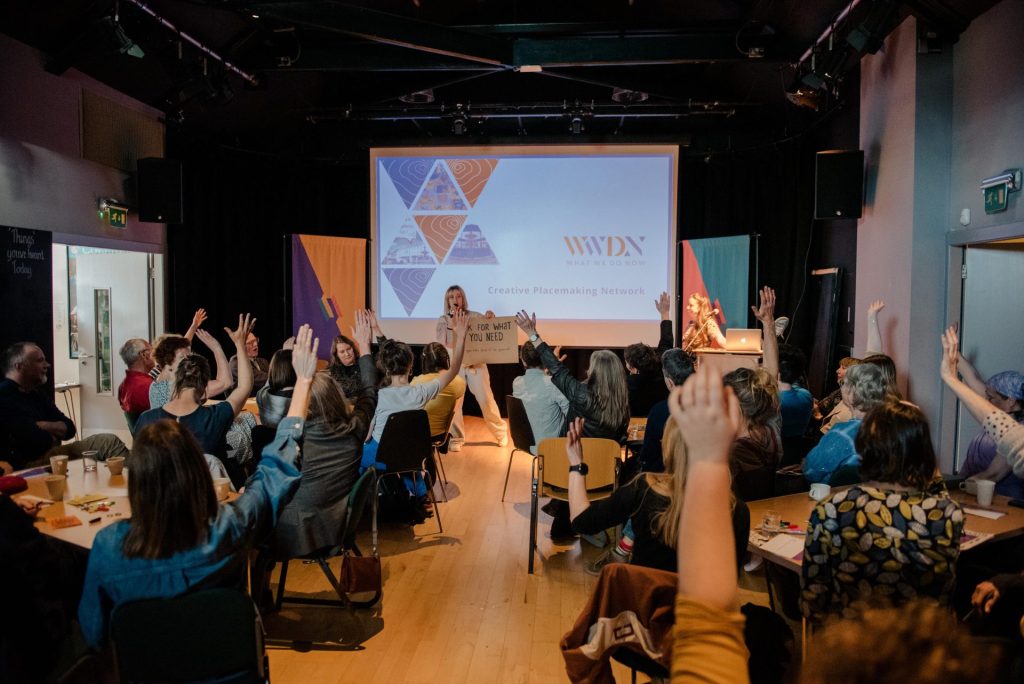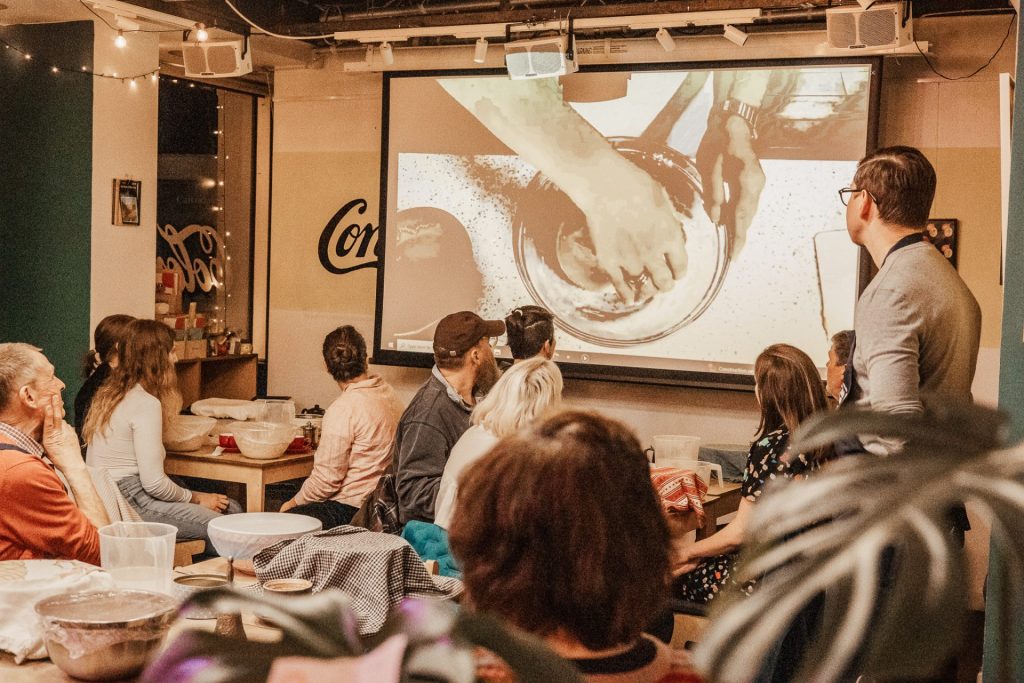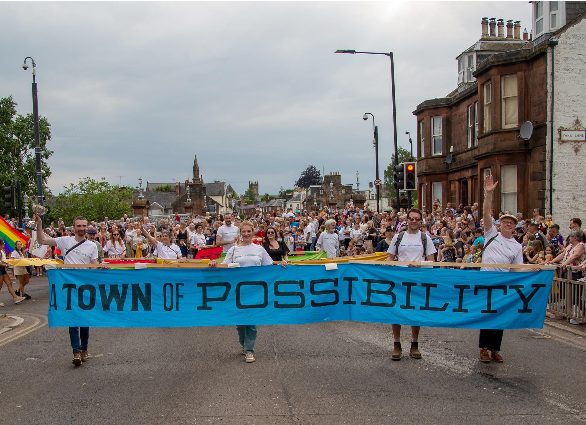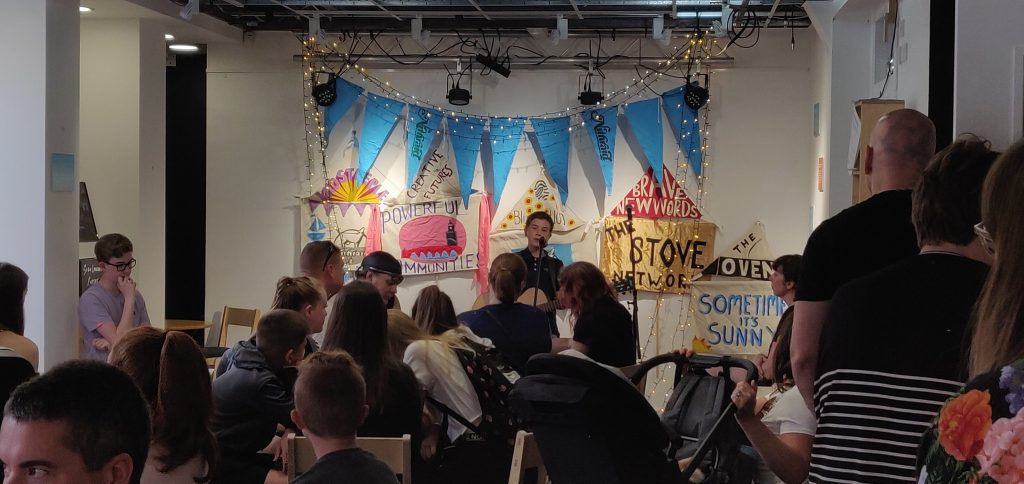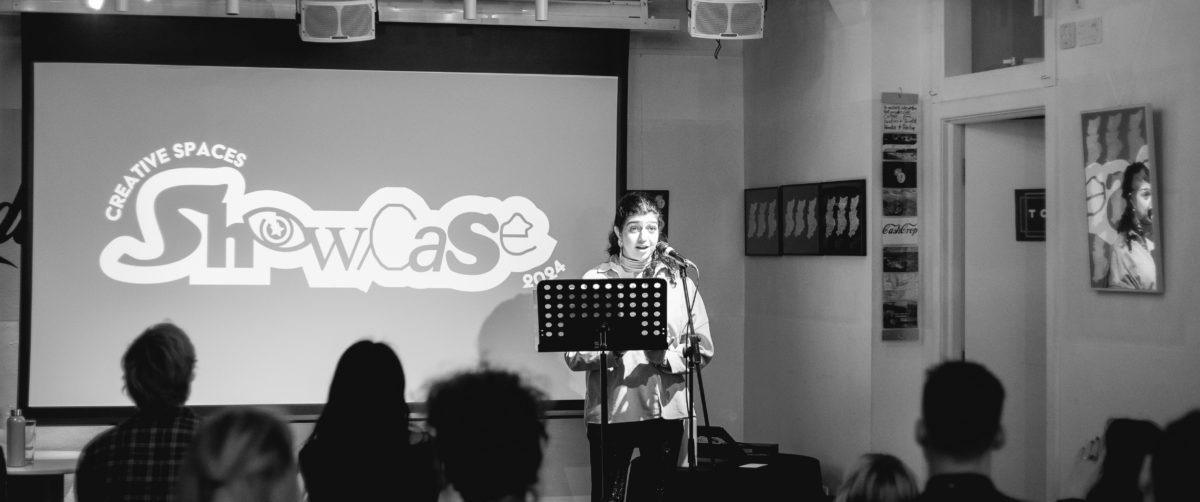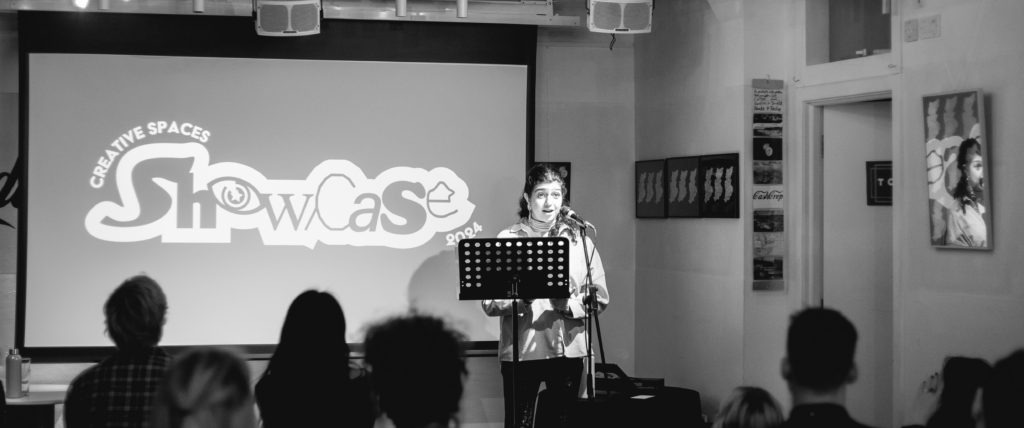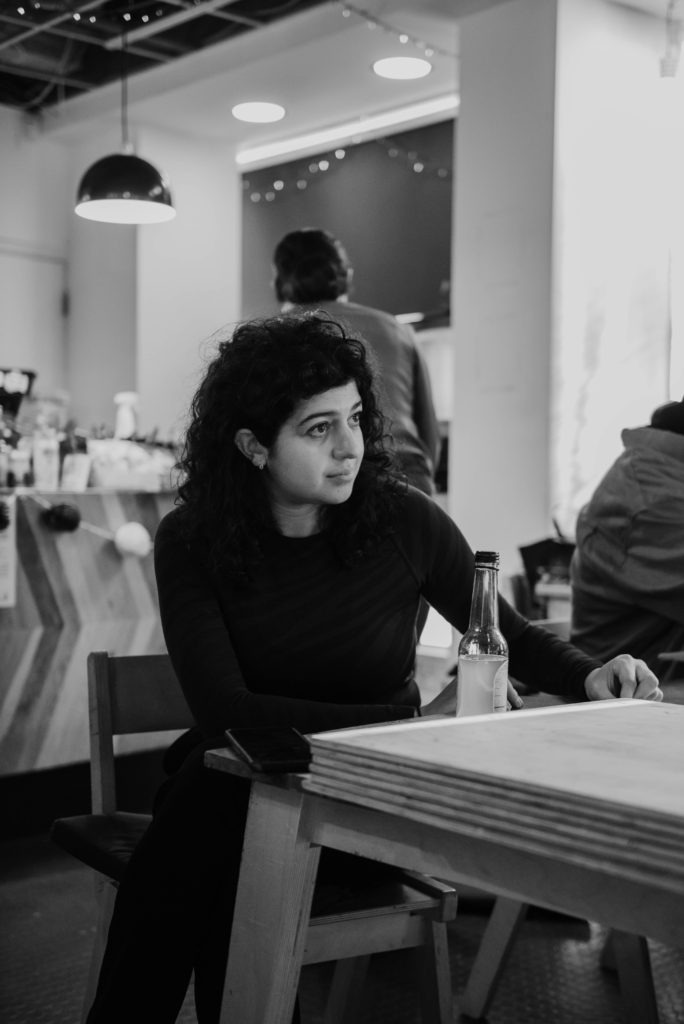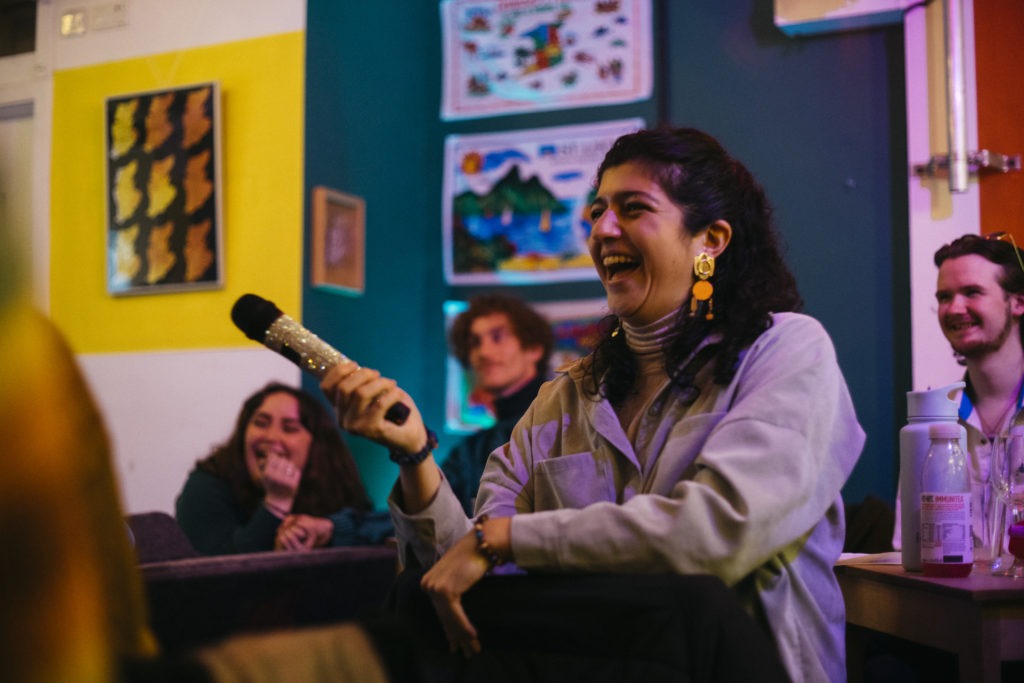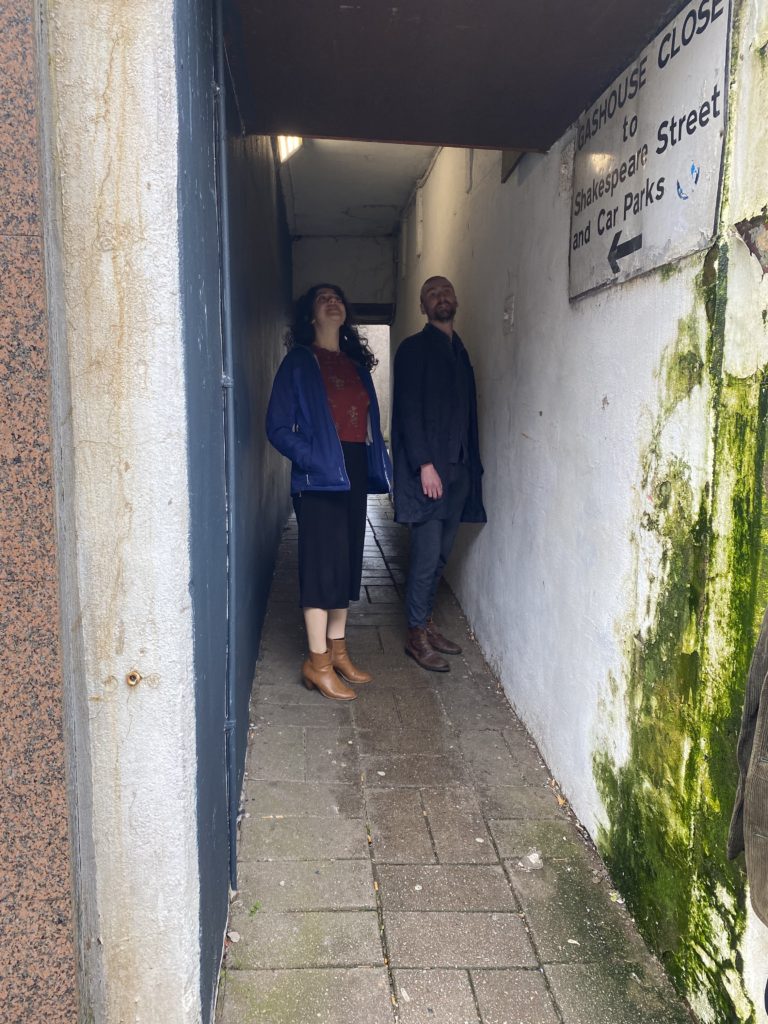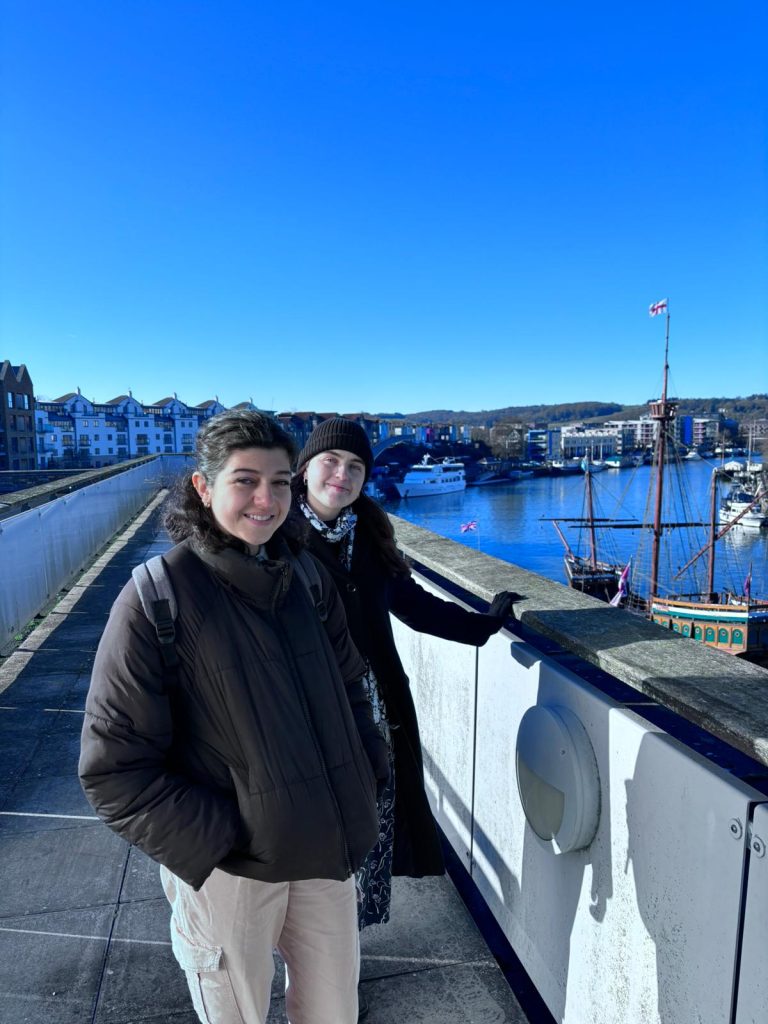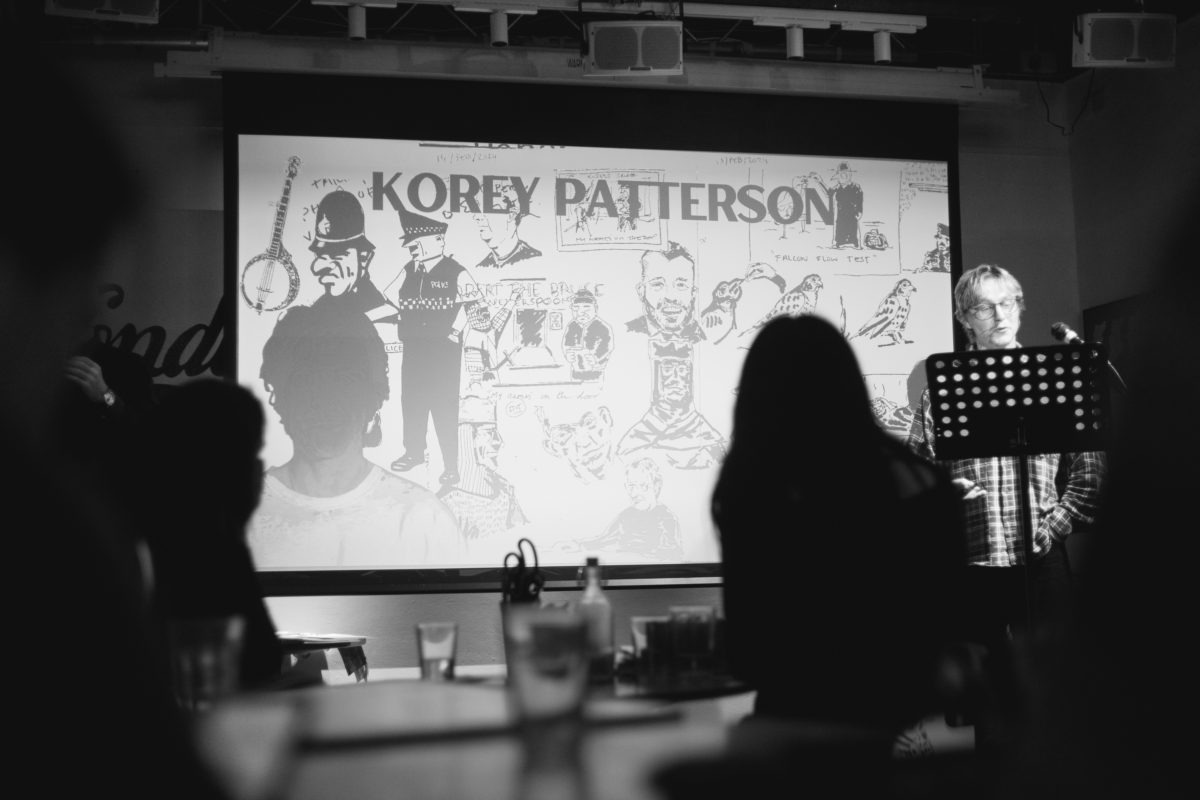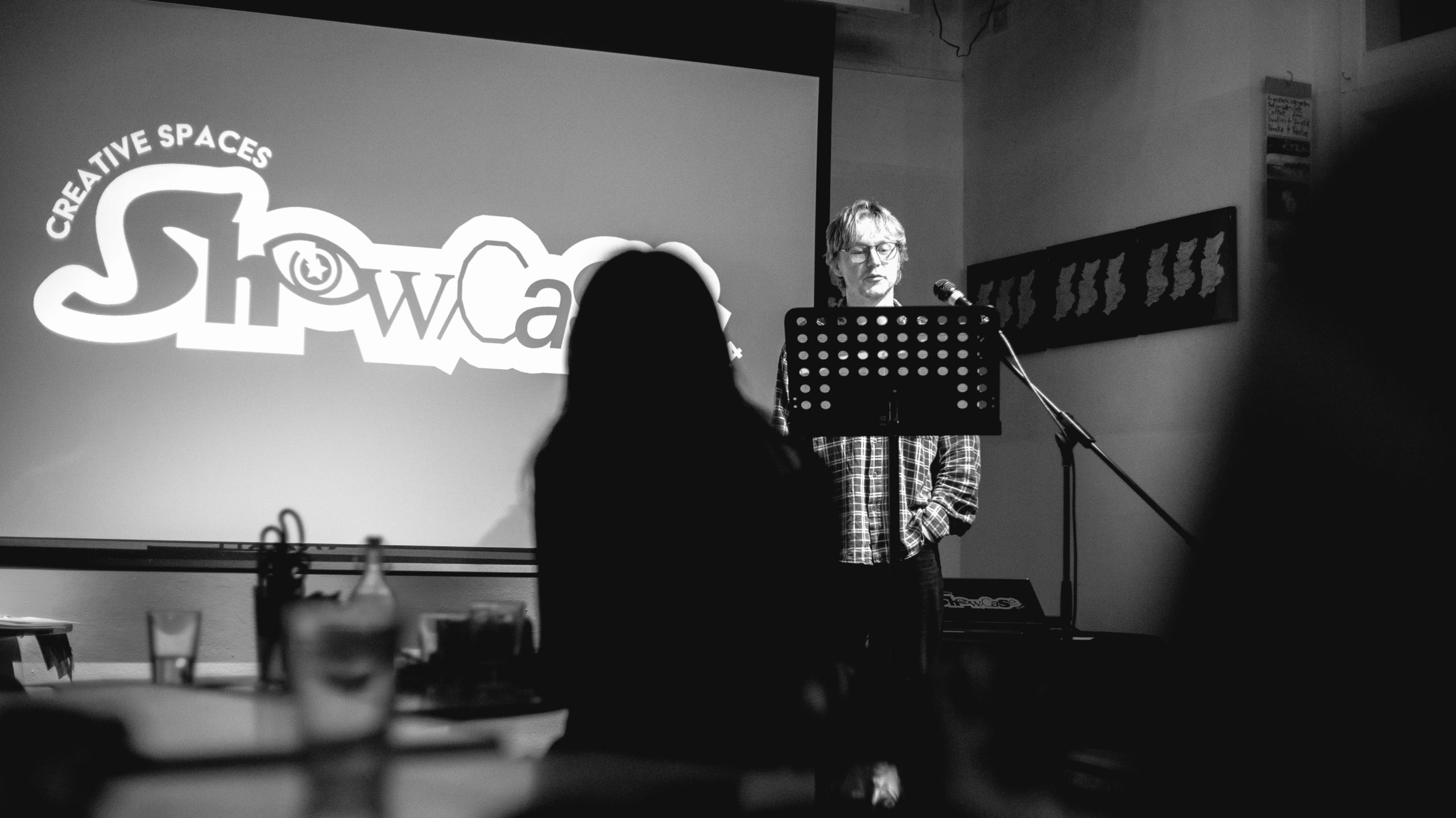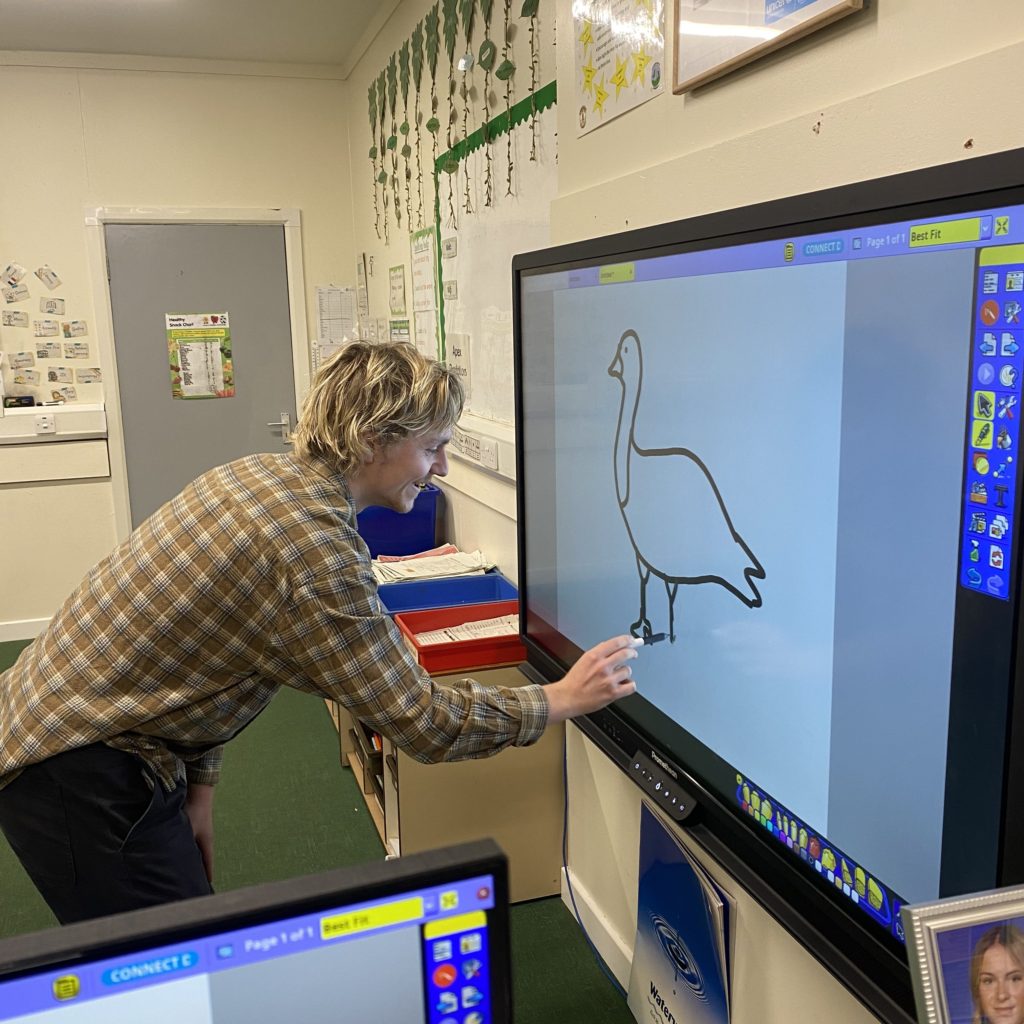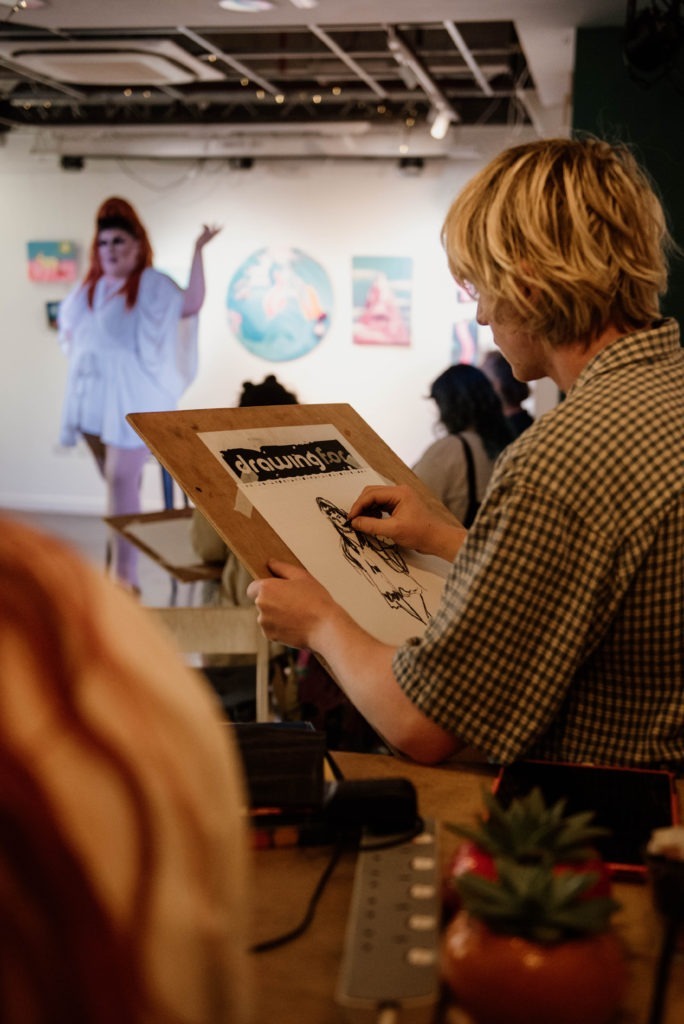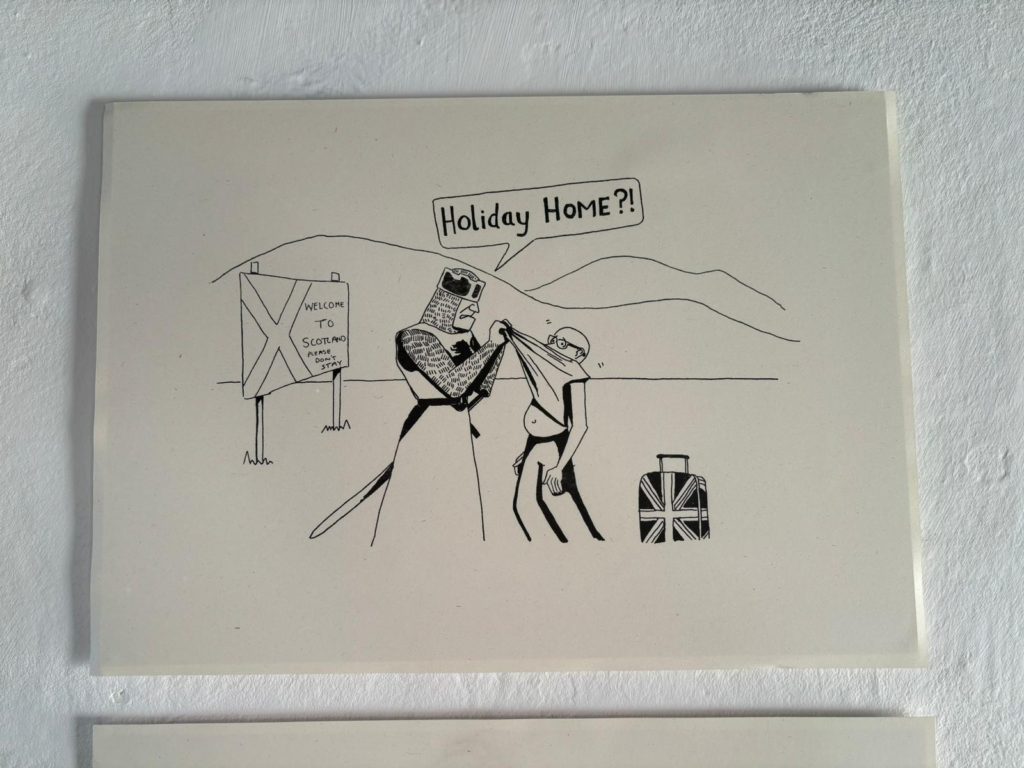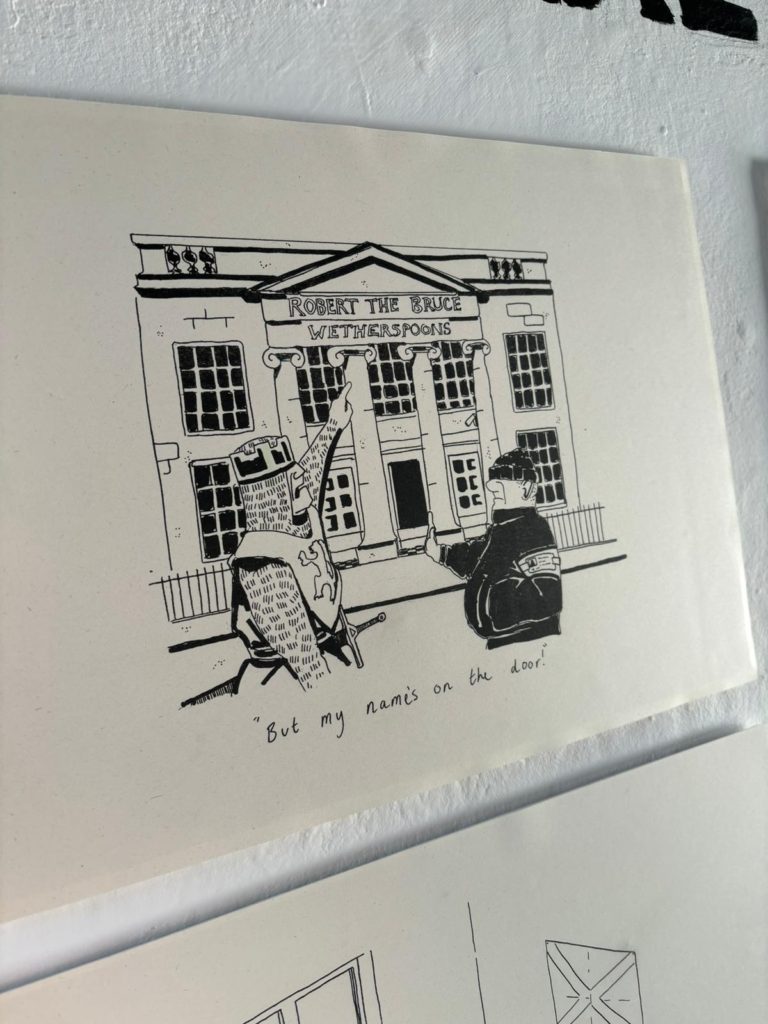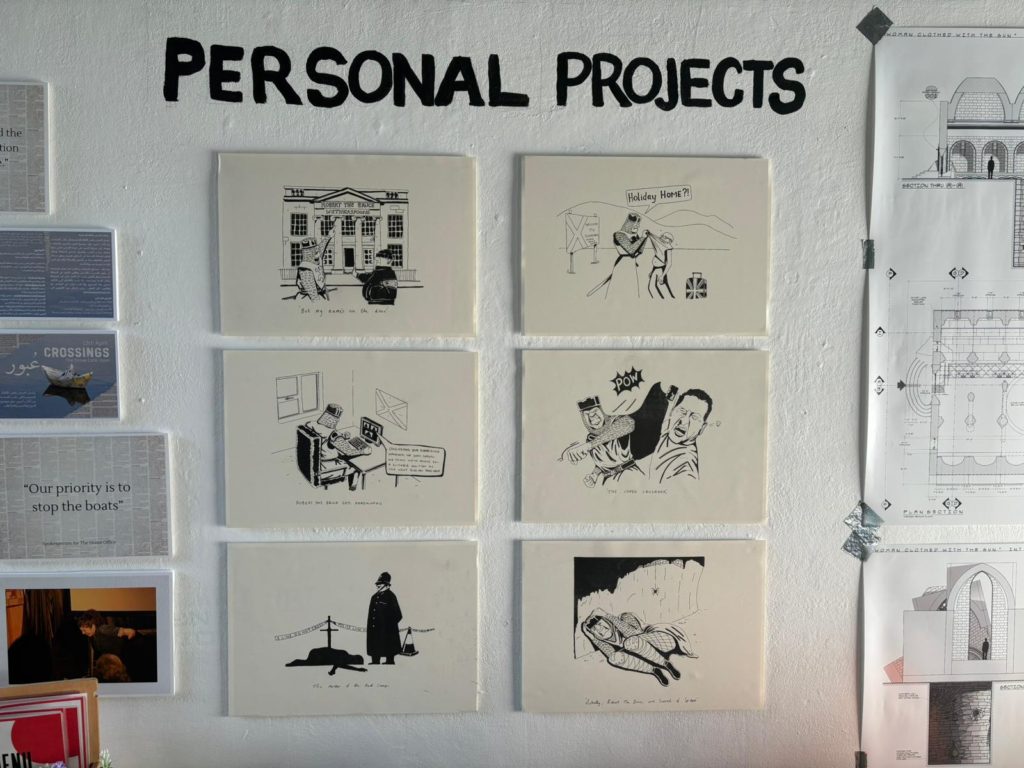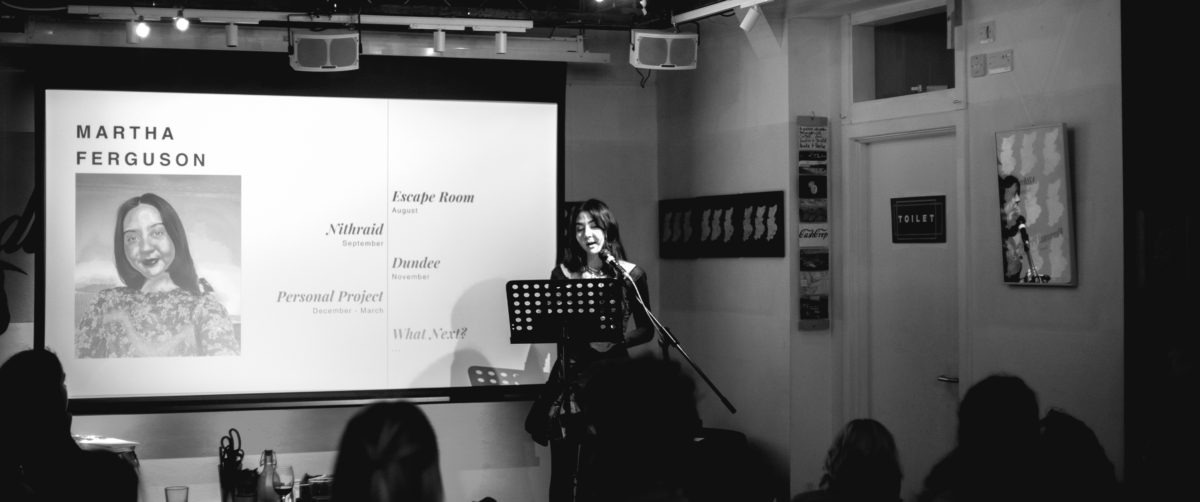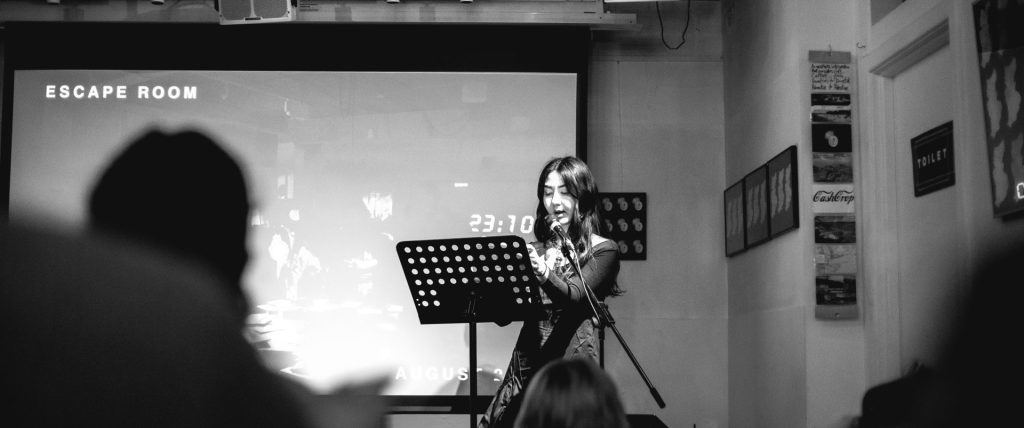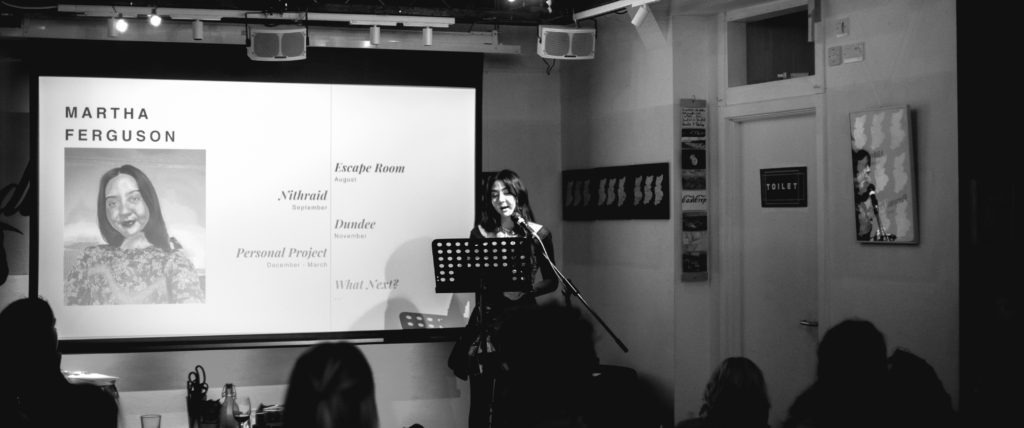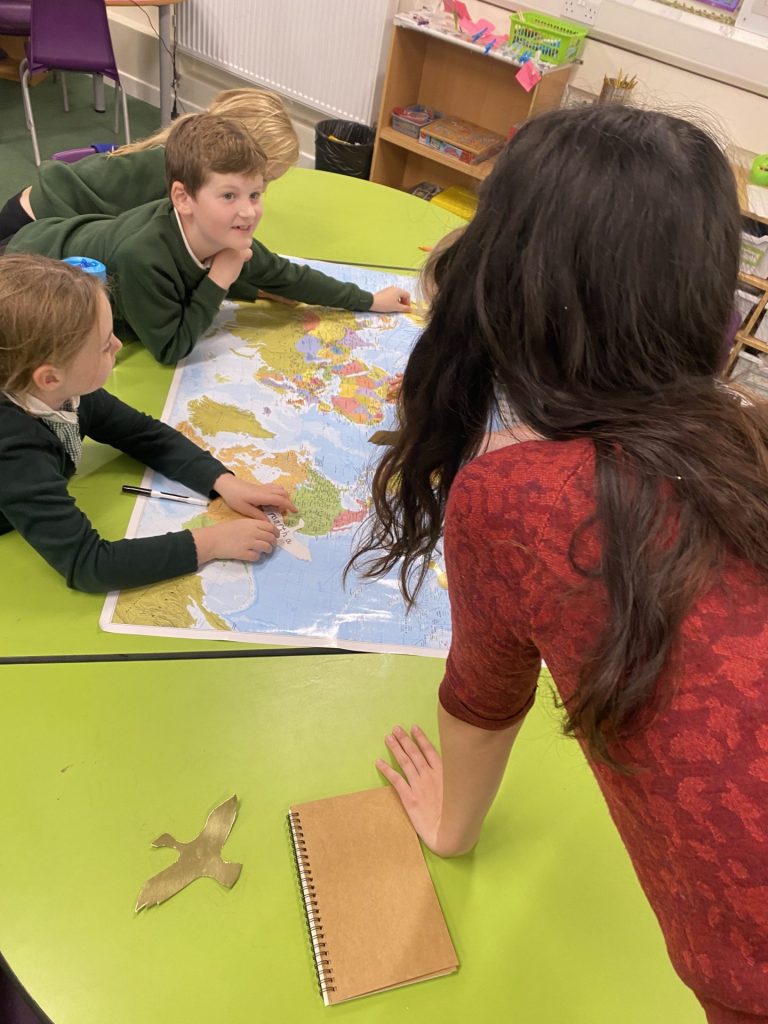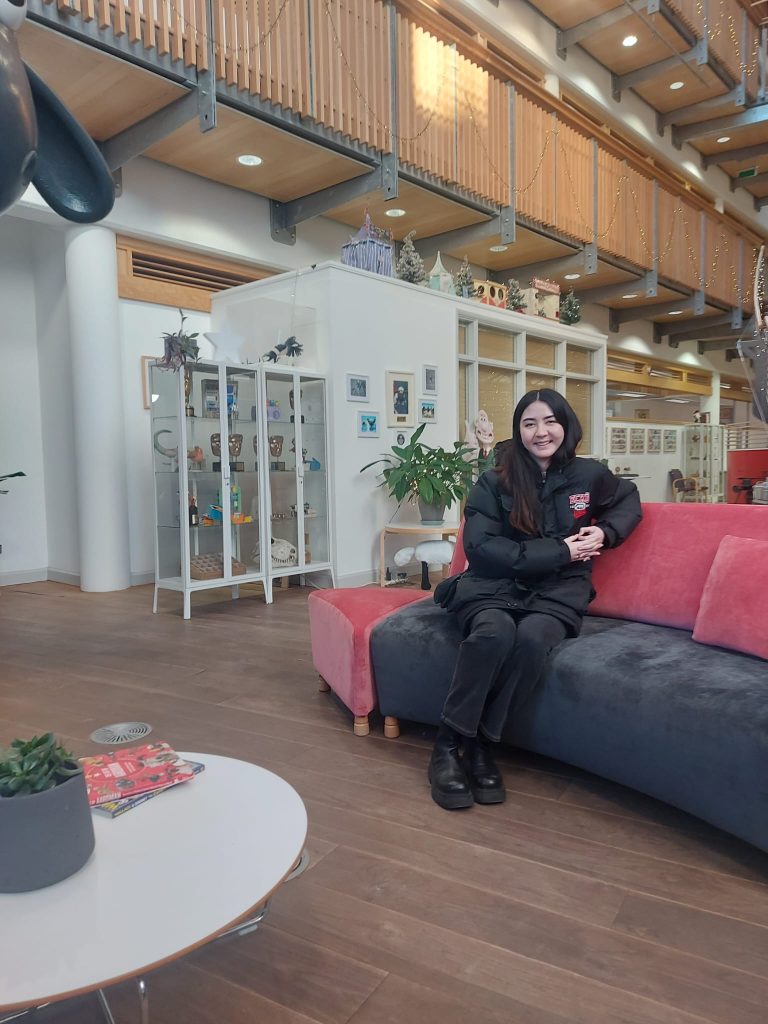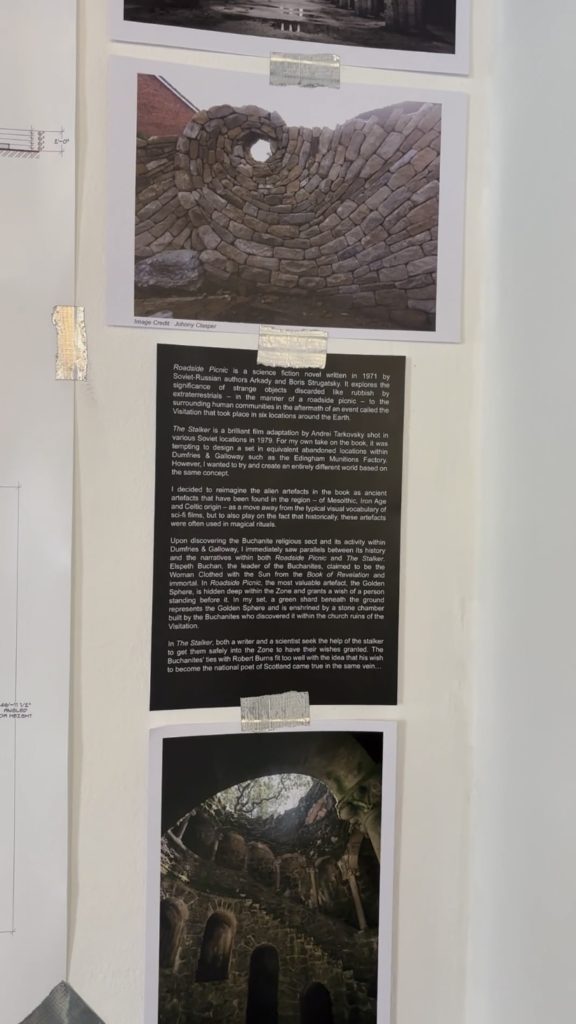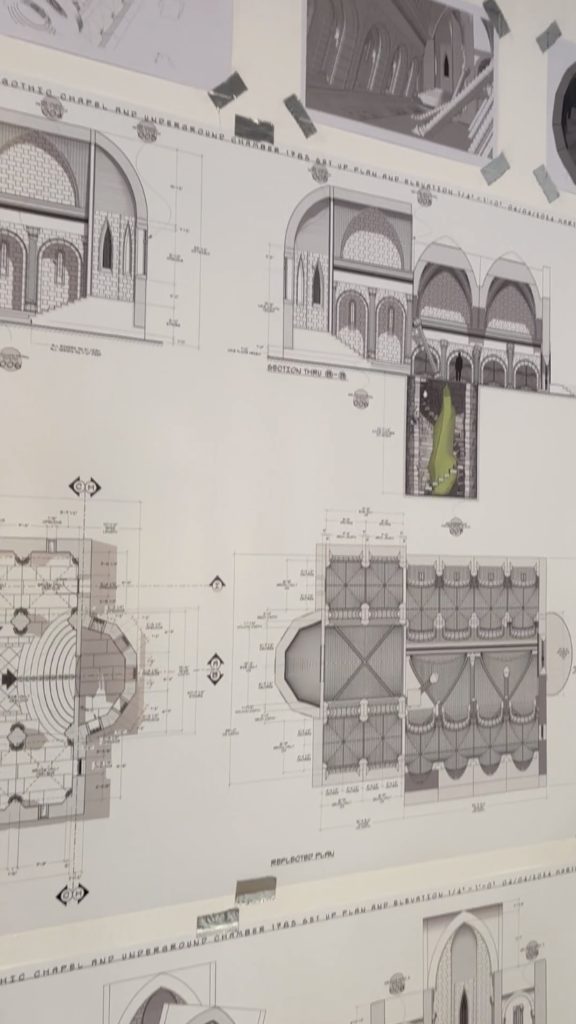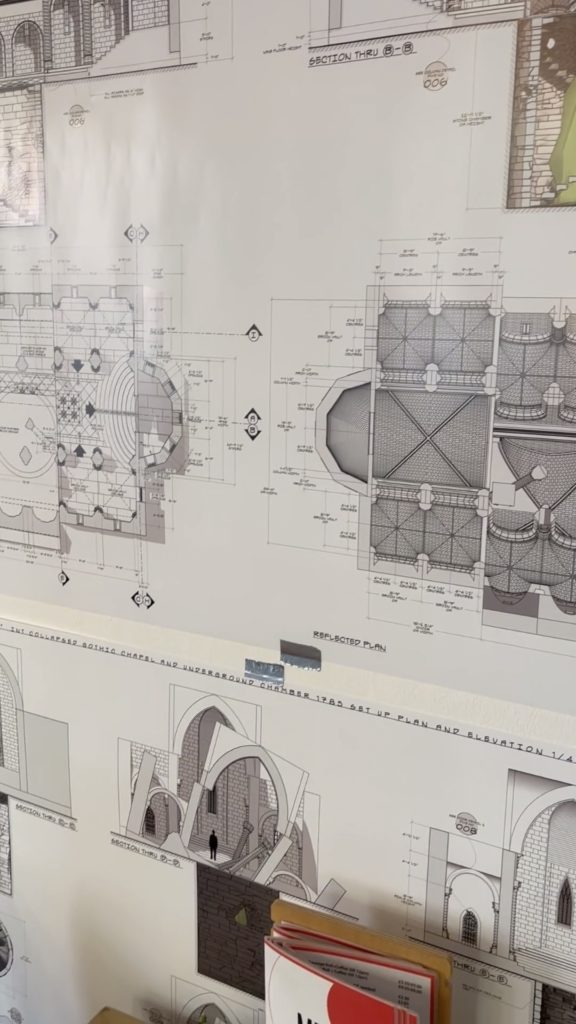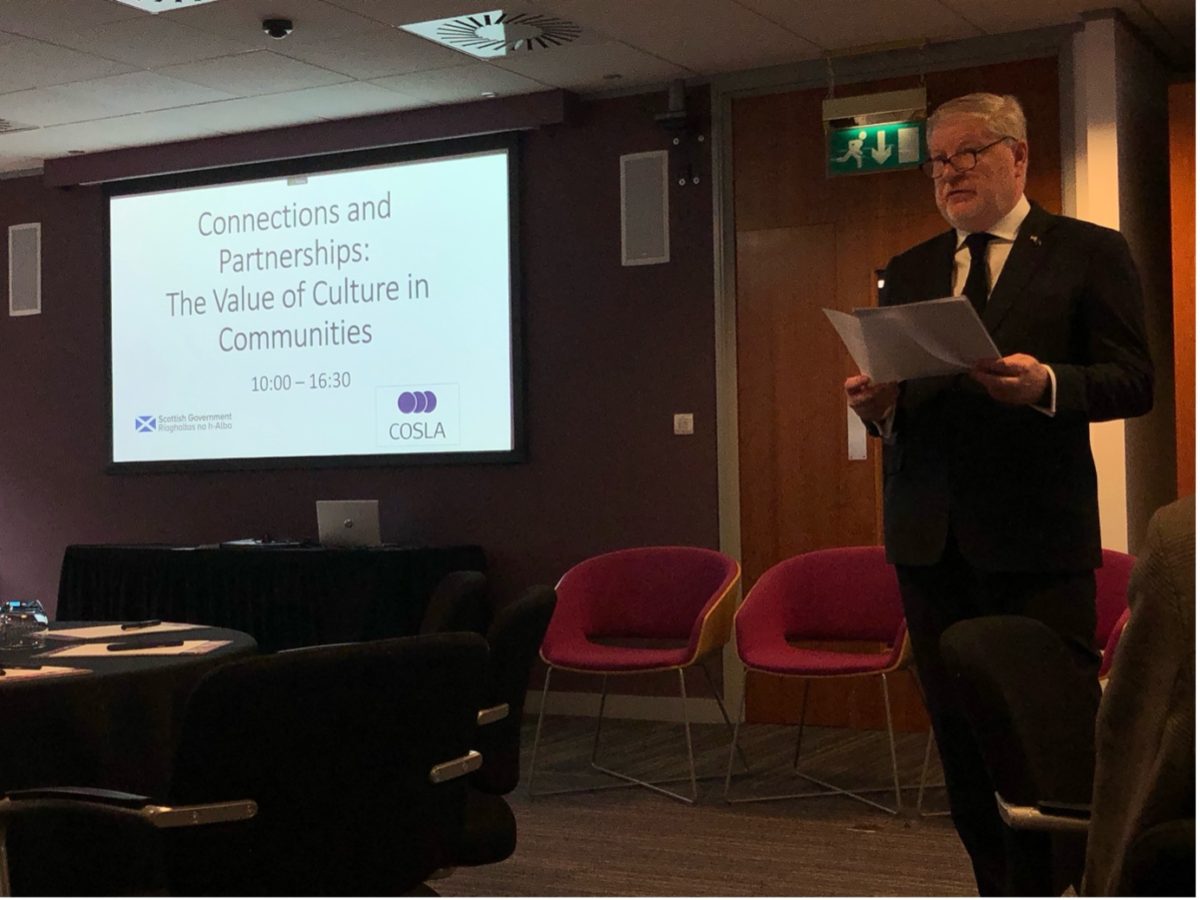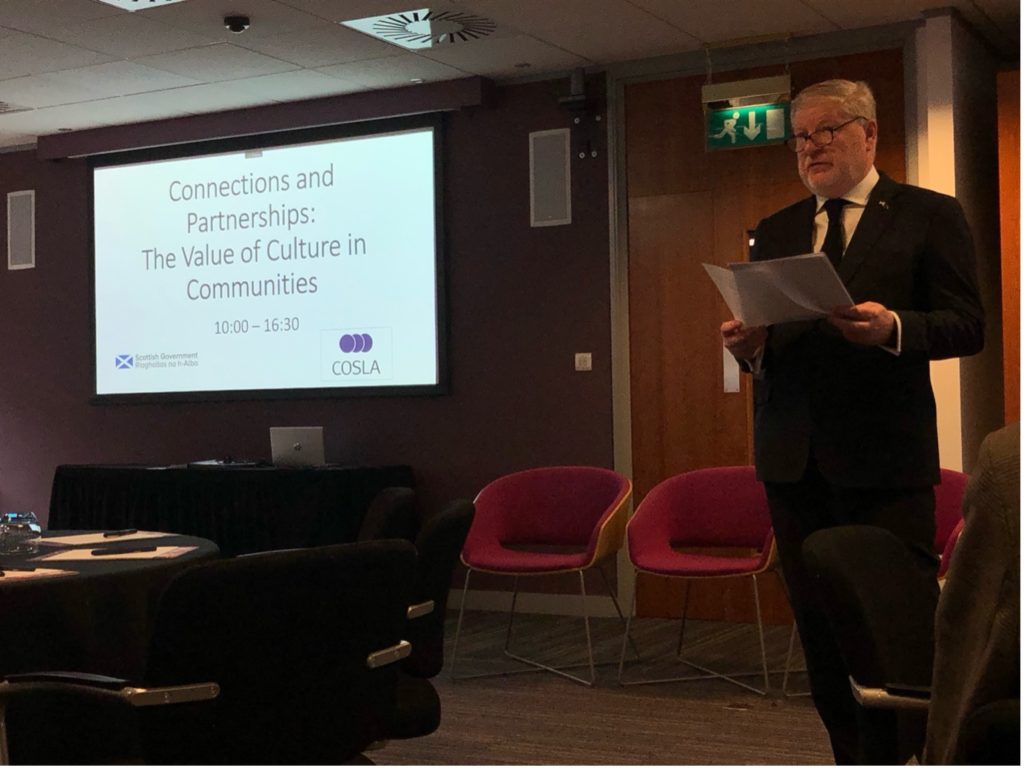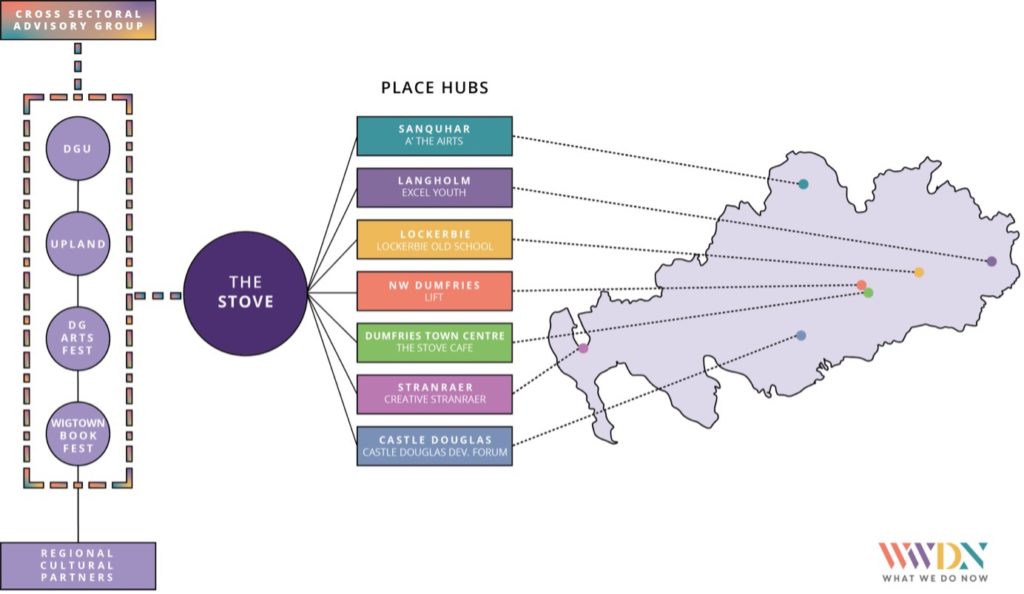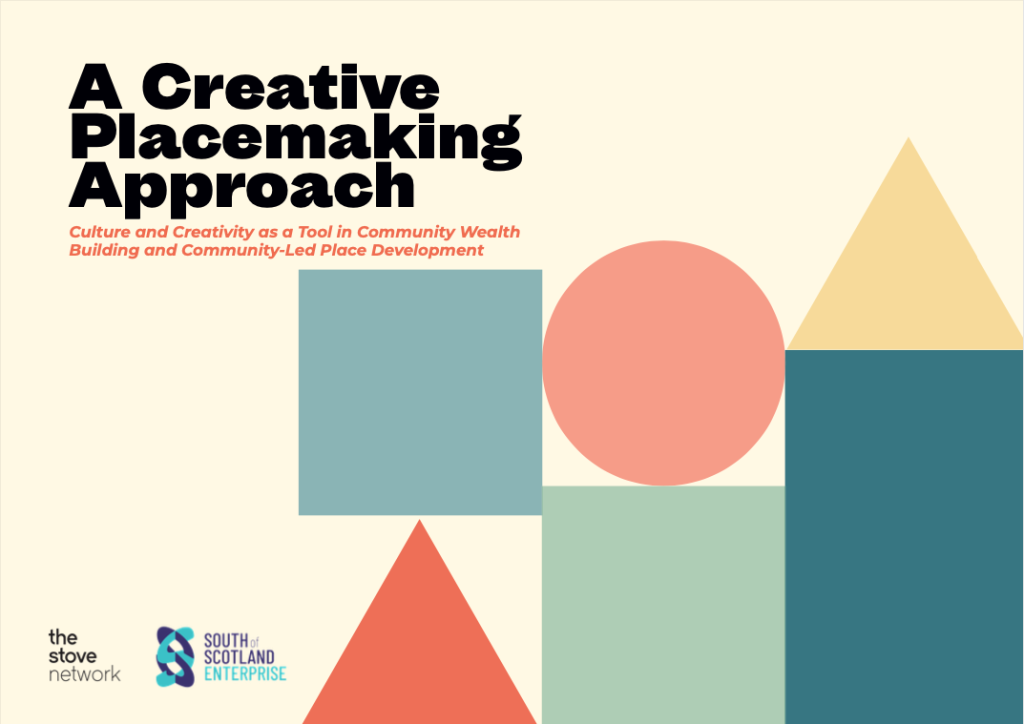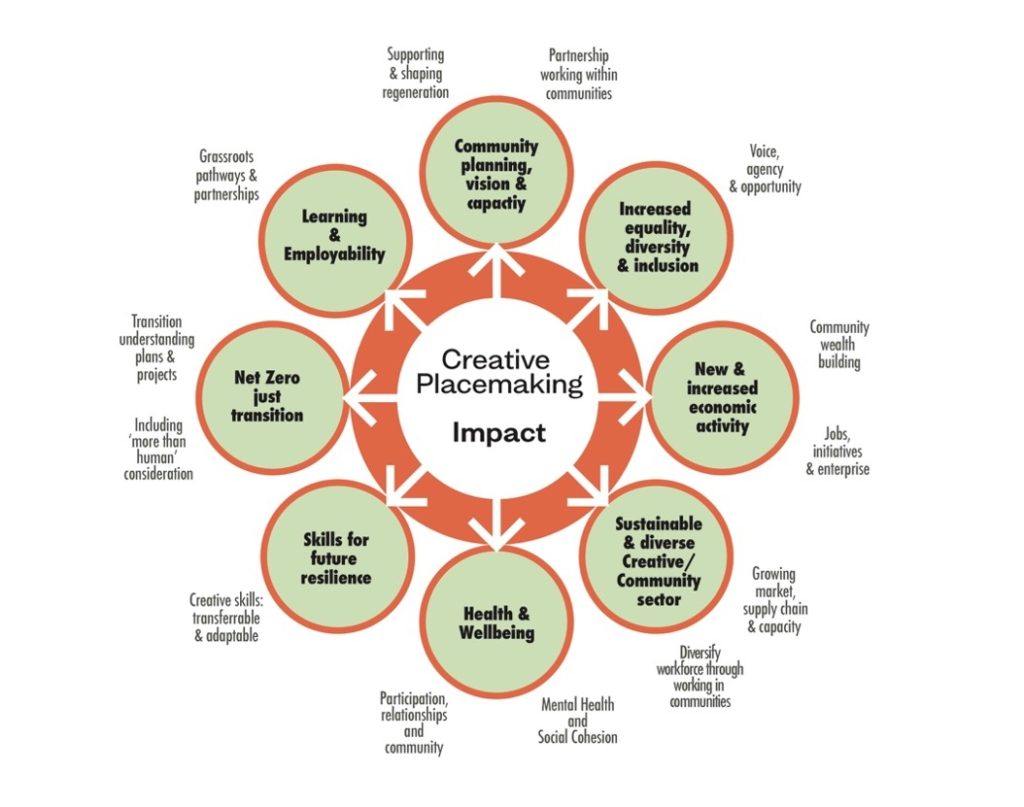At the end of June our Artistic Director Martin O’Neill and our Marketing Officer Erin Aitchison travelled over to Callan in Ireland to visit Workhouse Union. This trip is part of a year-long learning exchange between Workhouse Union and The Stove to share organisational practices, knowledge, and experience with creative placemaking. Read Erin’s account of the trip below.
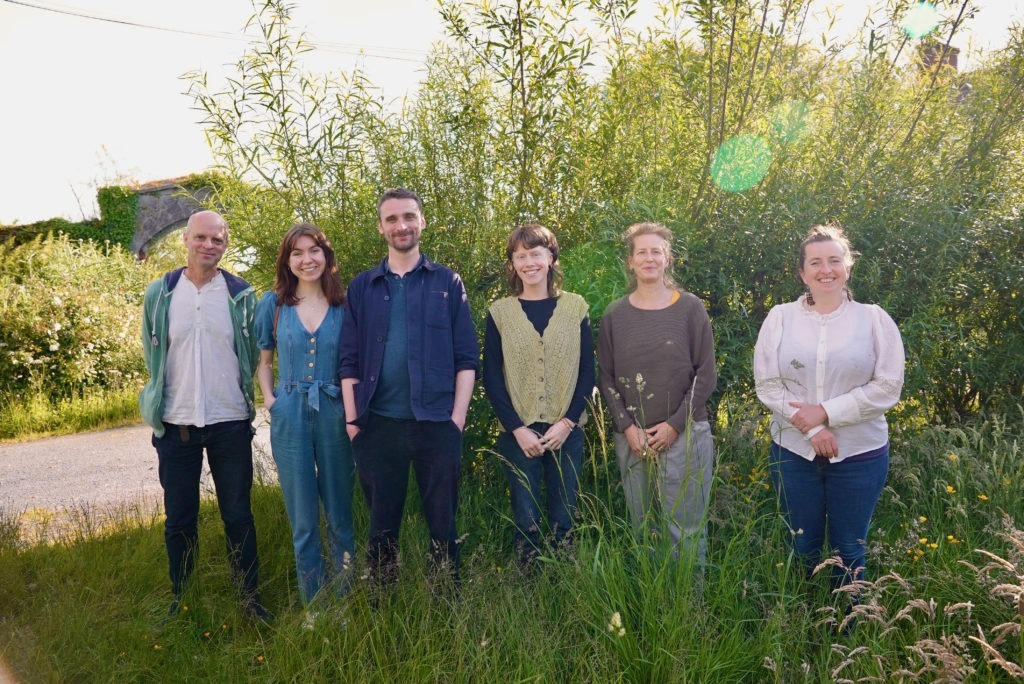
In June, I ventured overseas with our Artistic Director Martin to Callan in Ireland to visit Workhouse Union. Workhouse Union is a community co-design and creative placemaking organisation that supports the development of inclusive, meaningful, positive places and communities.
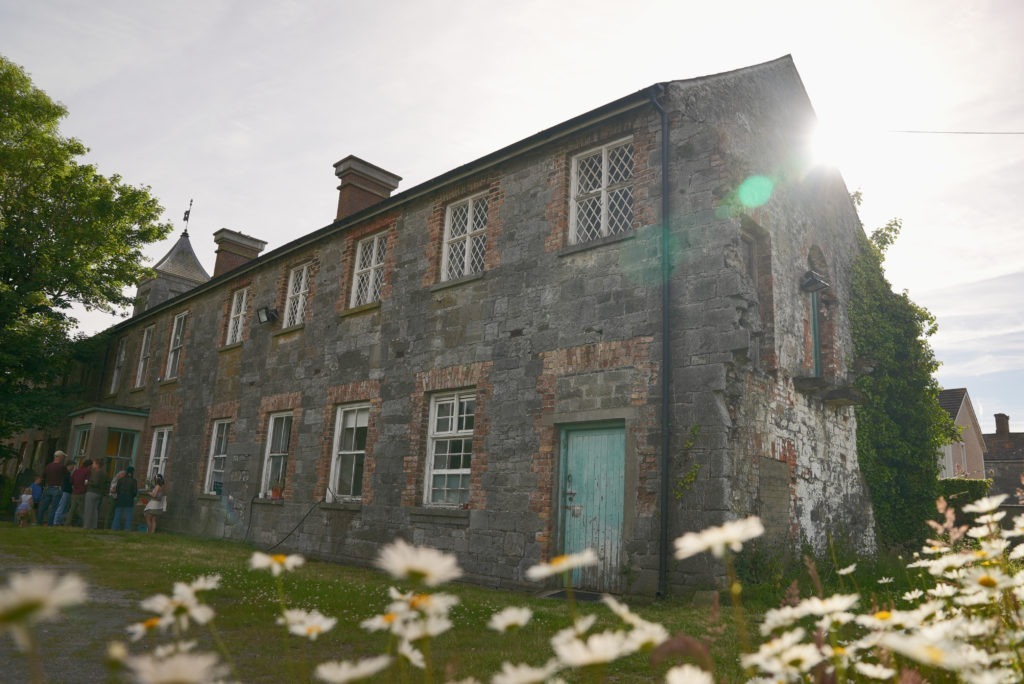
When I was asked if I wanted to be part of the exchange, I was ecstatic. This trip provided an excellent opportunity to use and share all I have learned about Creative Placemaking since joining the Stove, as well as learn first-hand from Martin throughout the week.
We arrived in Callan, a rather small town 11 miles South of Kilkenny, in the evening on Monday the 17th of June. We had flown over to Dublin from Glasgow and enjoyed a quiet coach journey from the airport straight to Callan – a feat in public transport that Scotland could take some notes from!
We were greeted by Workhouse Union’s Creative Director, Rosie Lynch, who walked us up the High Street, picking out interesting snippets of Callan’s history as we wandered to our accommodation. During our trip, we stayed with Rosie’s lovely mum Heather and we are very thankful for her hospitality and kindness throughout our visit.
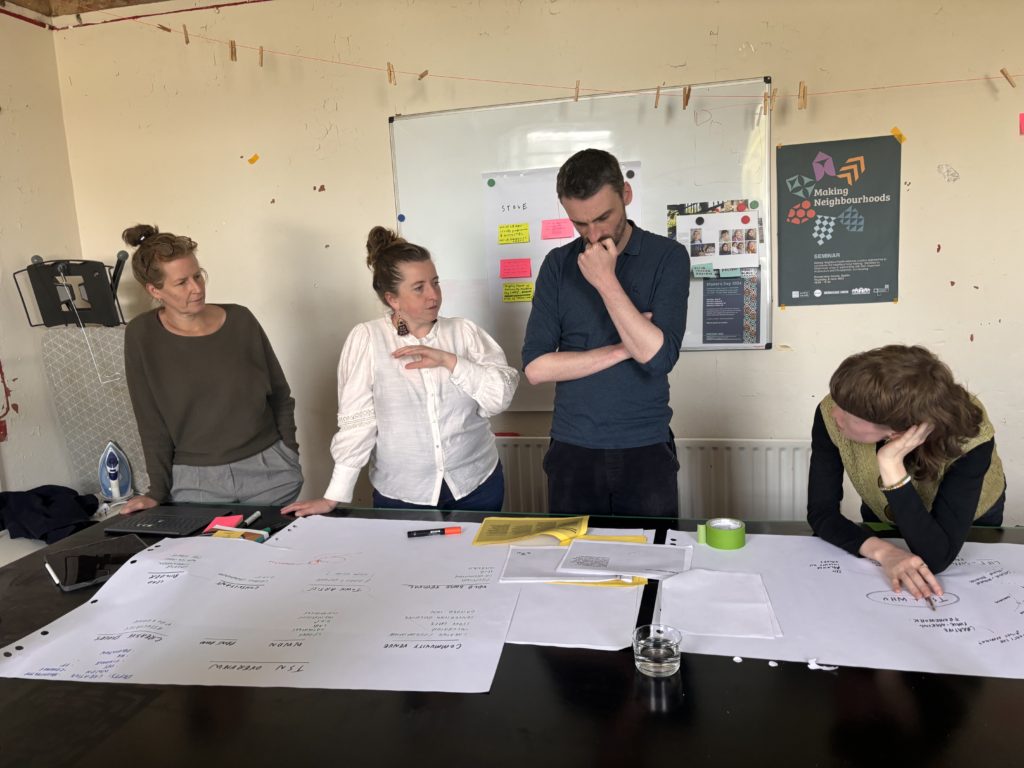
After a good night’s sleep and some breakfast, the real fun started. Tuesday was a day of exploration as we were given a tour of Workhouse Union. The team is situated in a wing of Callan Workhouse, a gorgeous listed building, that is also used as studio space for artist Ciaran Murphy, alongside a garden that was managed by Camphill Callan. WHU has an office, library and research room, and a screen printing studio ‘Print Block Callan’ – that we were able to see in action later in the week.
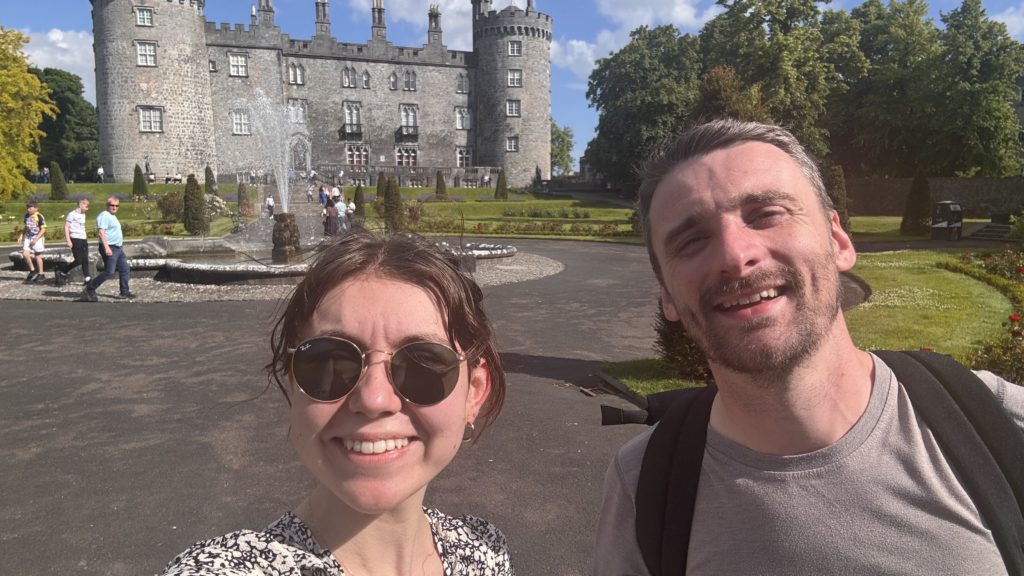
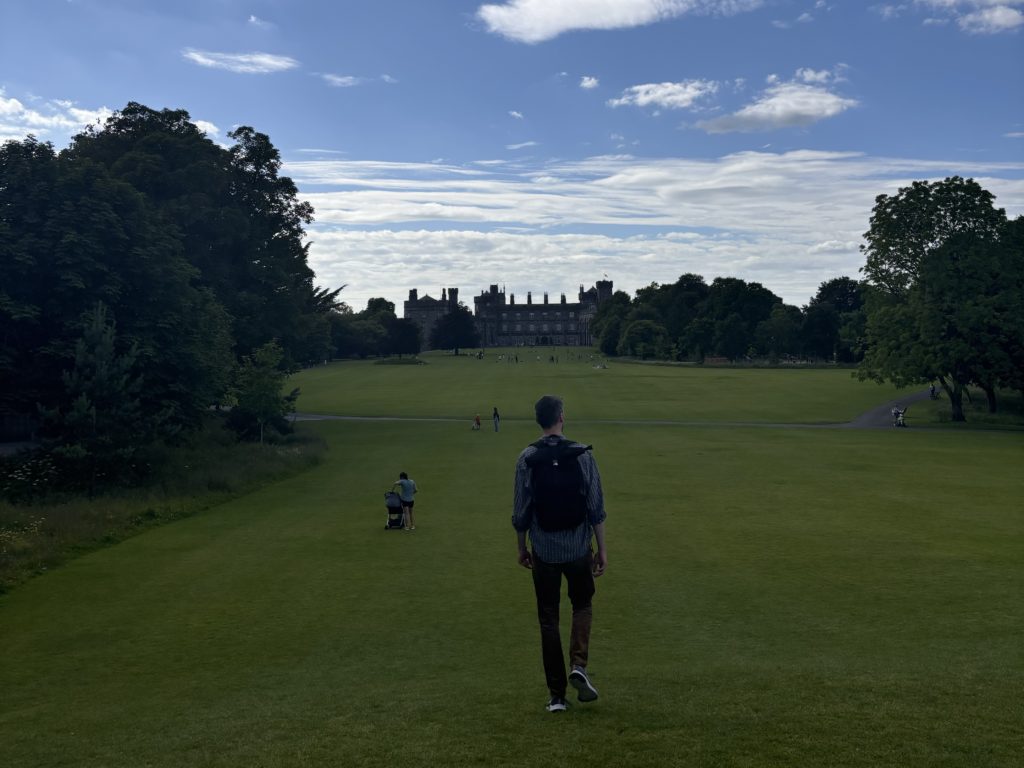
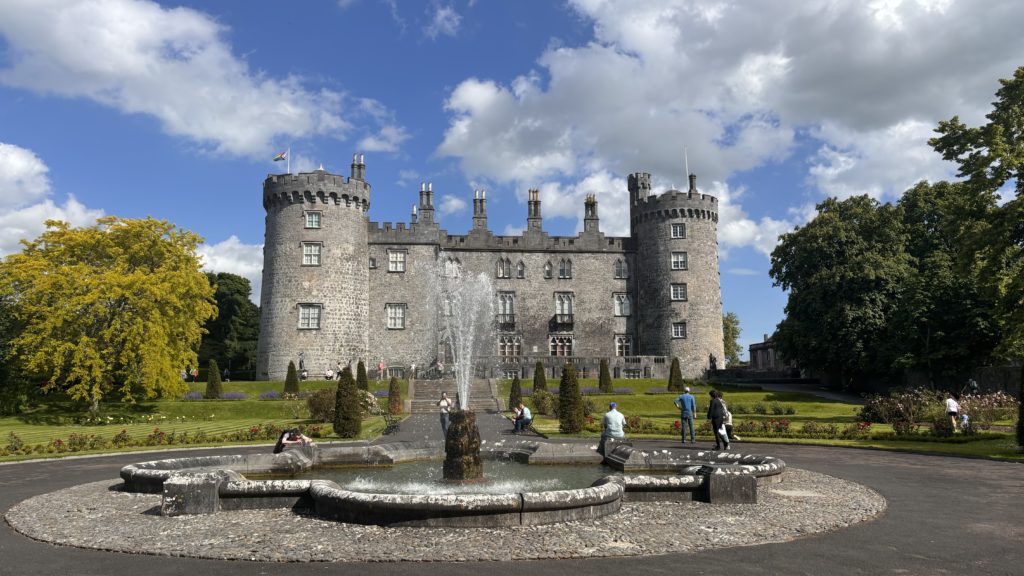
We met team members Noortje Van Deursen, (Creative Producer & Co-Design Facilitator), and Alice Bowler (Community Co-Design Facilitator) as we chatted about our roles and how we each operate in our respective organisations. The explorative theme of the day continued in the afternoon when we were given a tour of Callan and told more about the network of art organisations and collectives that operate in the town. We visited KCAT Arts Centre; a multi-disciplinary centre that fosters creative ambition and professional development for those working in the arts. We toured the artists’ workshop spaces, meeting some of the artists in residence on the way, and watched the construction of a new exhibition that was opening that Friday by Jason Turner.
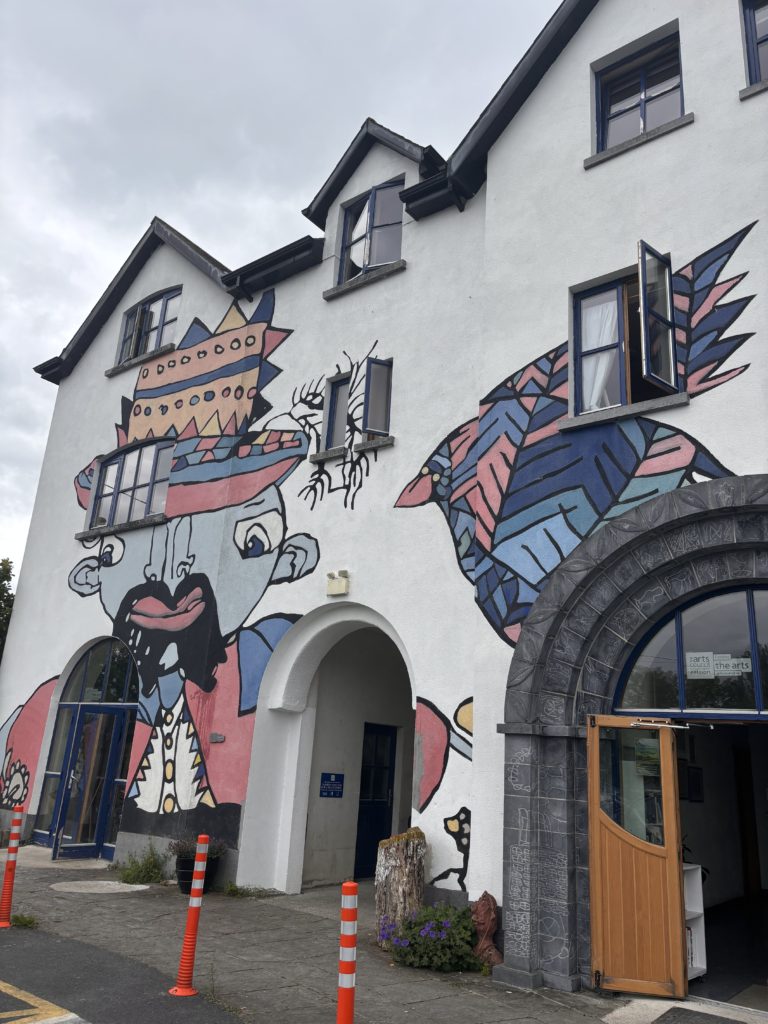
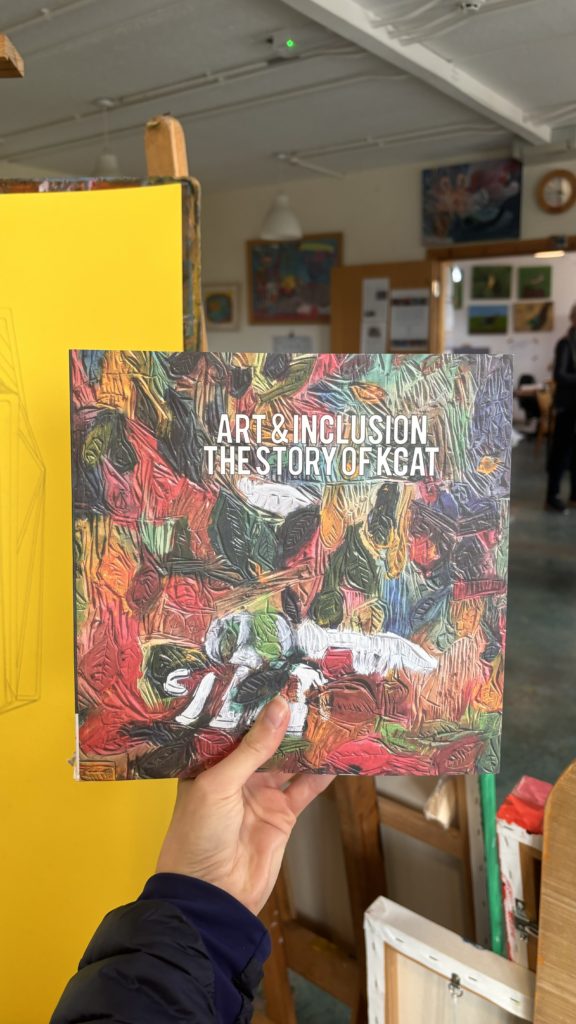
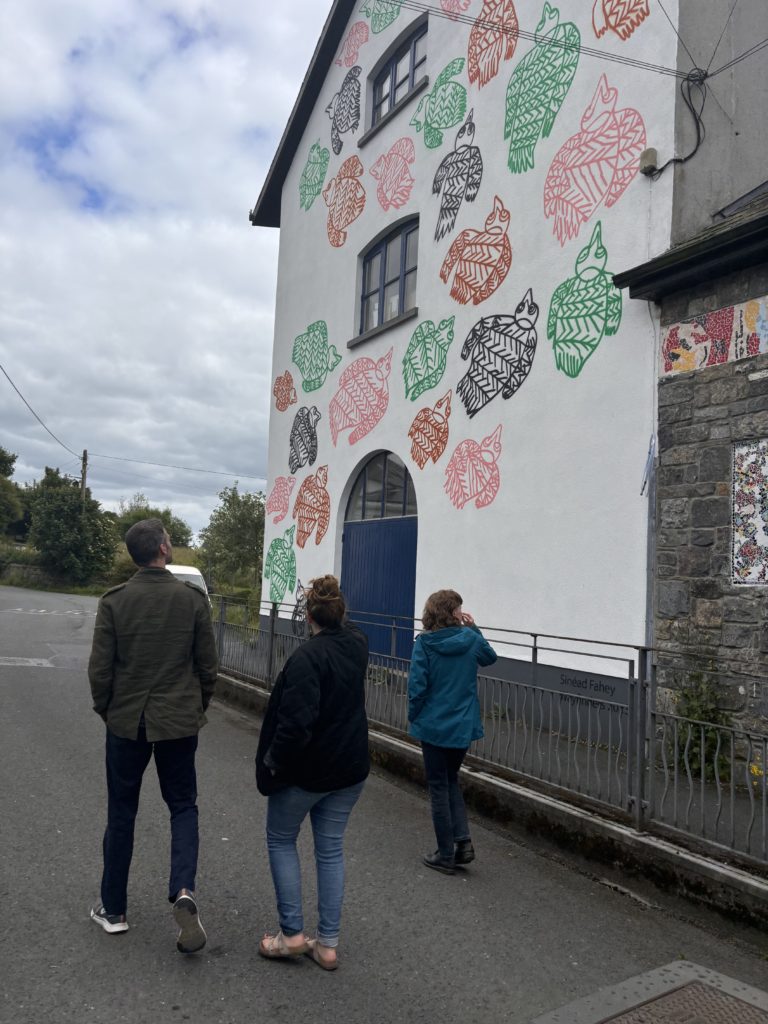
On Wednesday, we had a day of shared learning with the WHU team and answering questions that ranged from how we action administrative procedures, to embedded Creative Placemaking in Scotland and Ireland. We were joined by Mark Girling, WHU’s Administrator, who joined us at the Stove earlier this year as part of the exchange. Afterwards, we stopped for lunch stop at the gorgeous Fennelly’s coffee house before getting stuck back in to sharing processes and experiences with the team. My highlight of the trip was on the Wednesday evening, when WHU hosted a Midsummer pot luck supper. At the supper we were introduced to the wider creative community in Callan; from artists to photographers, to theatre makers. It was a wonderful evening of sharing creative experience and feeling the embedded sense of community Callan has.
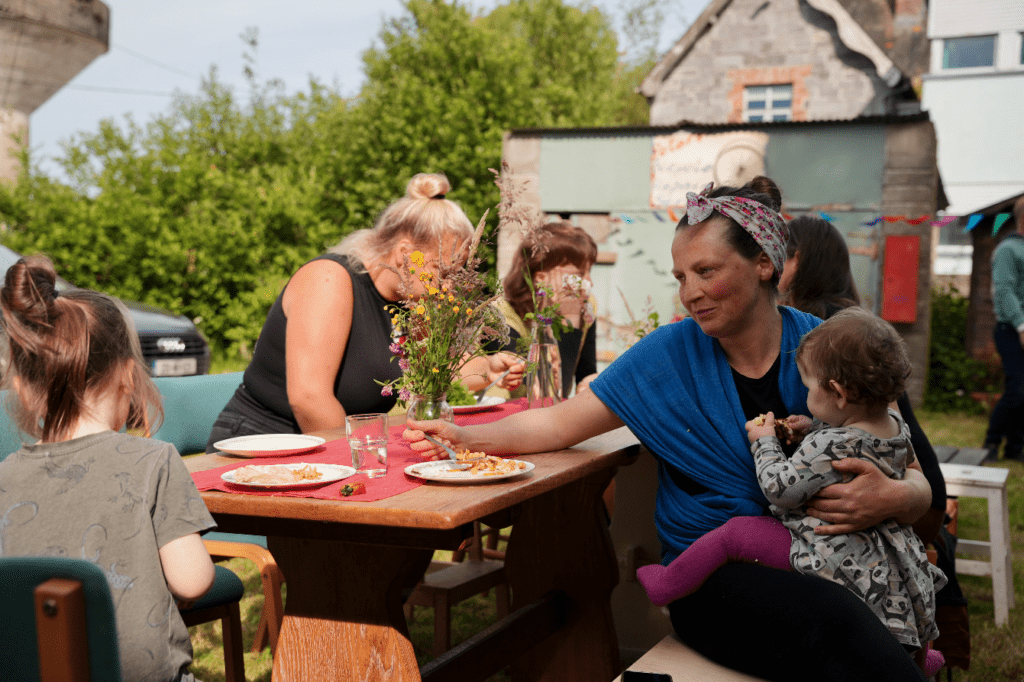
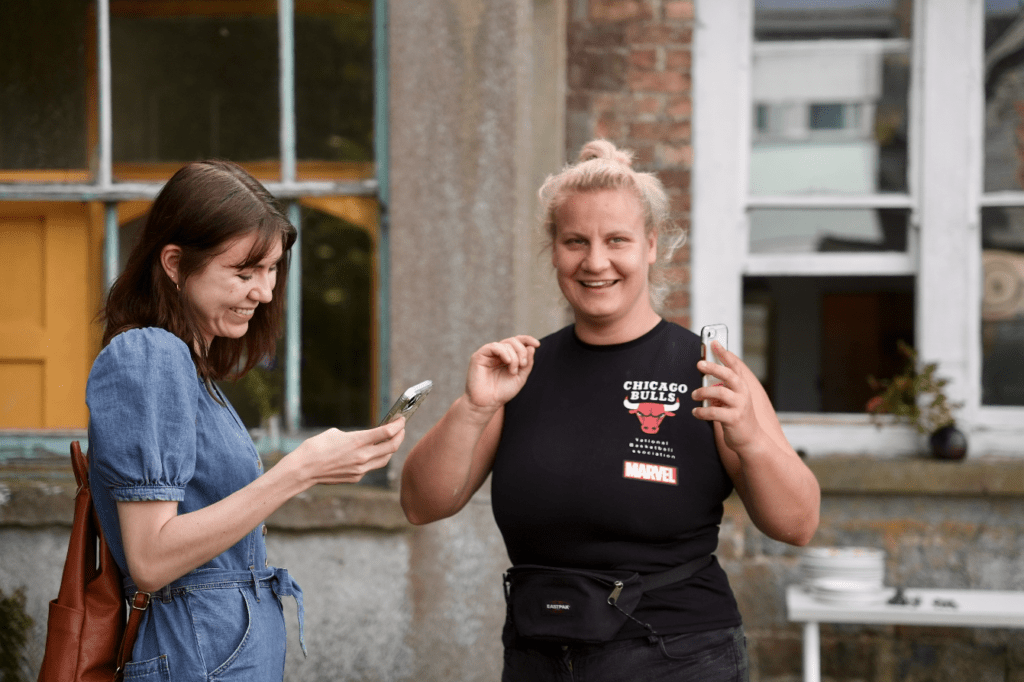
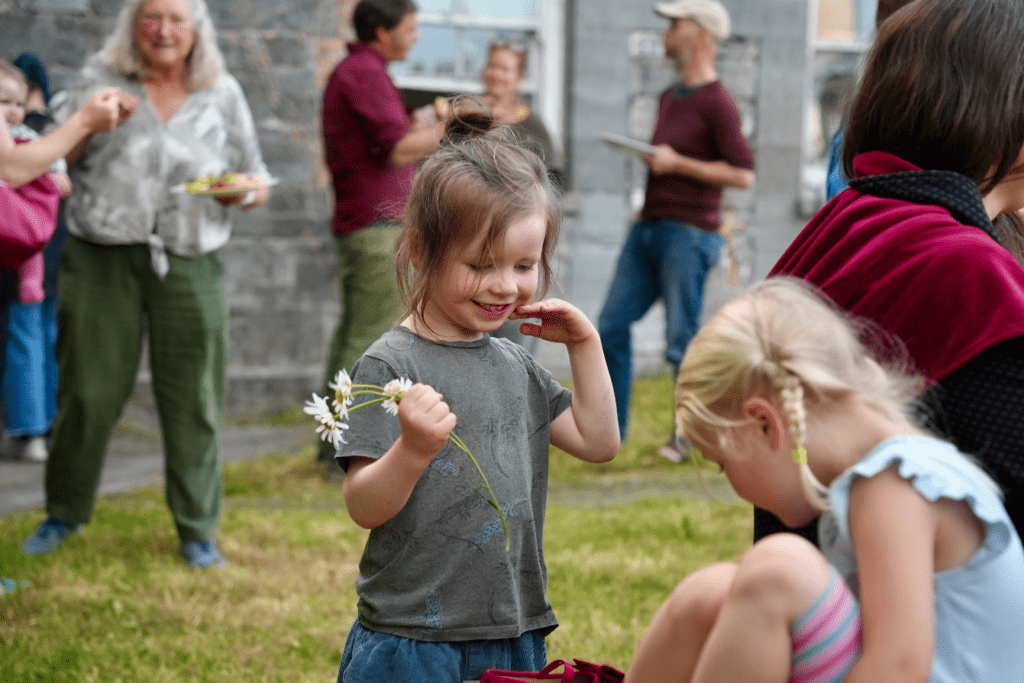
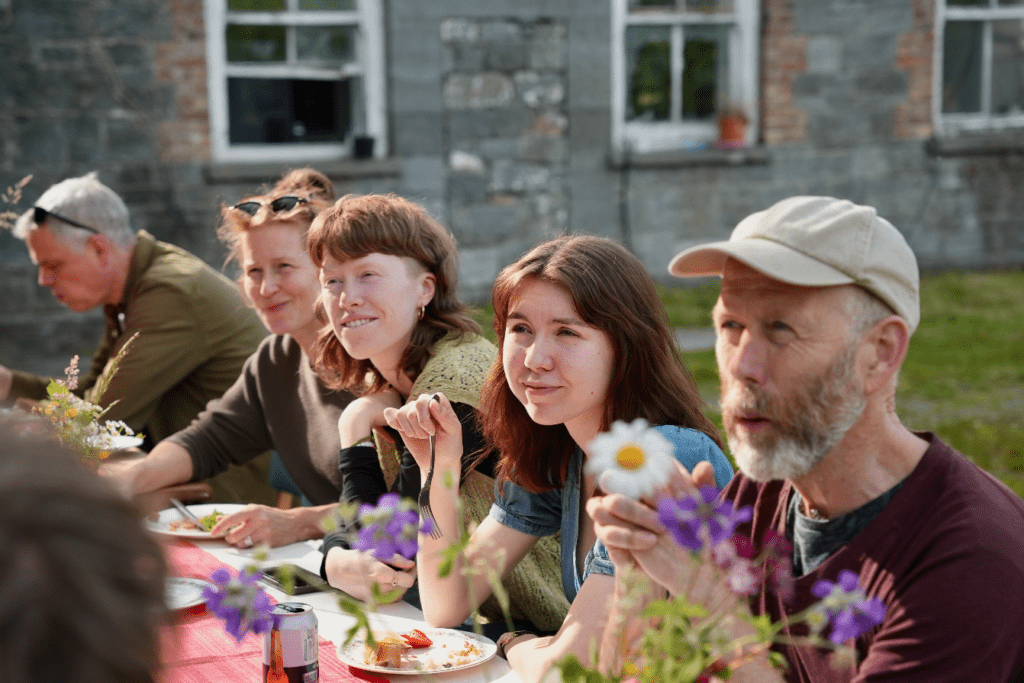
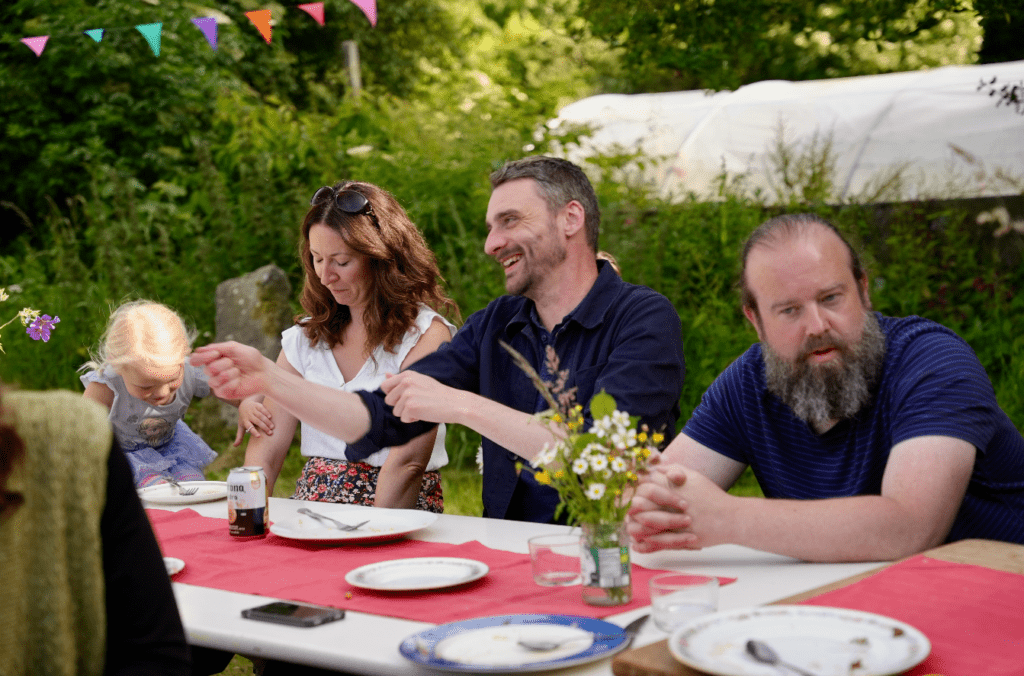
On our last full day of the exchange, we took part in Printblock’s ‘Maker’s day’. ‘Maker’s Day’ is for experienced textile printers to bring a project and use the studio facilities with support and advice from studio technician Michelle McMahon.
Although Martin has experience with screen printing, this was my first time trying it out. The design that we went with was a graphic made up of various images that I had captured over our trip. Martin had sketched elements from them and compiled them all into one graphic.
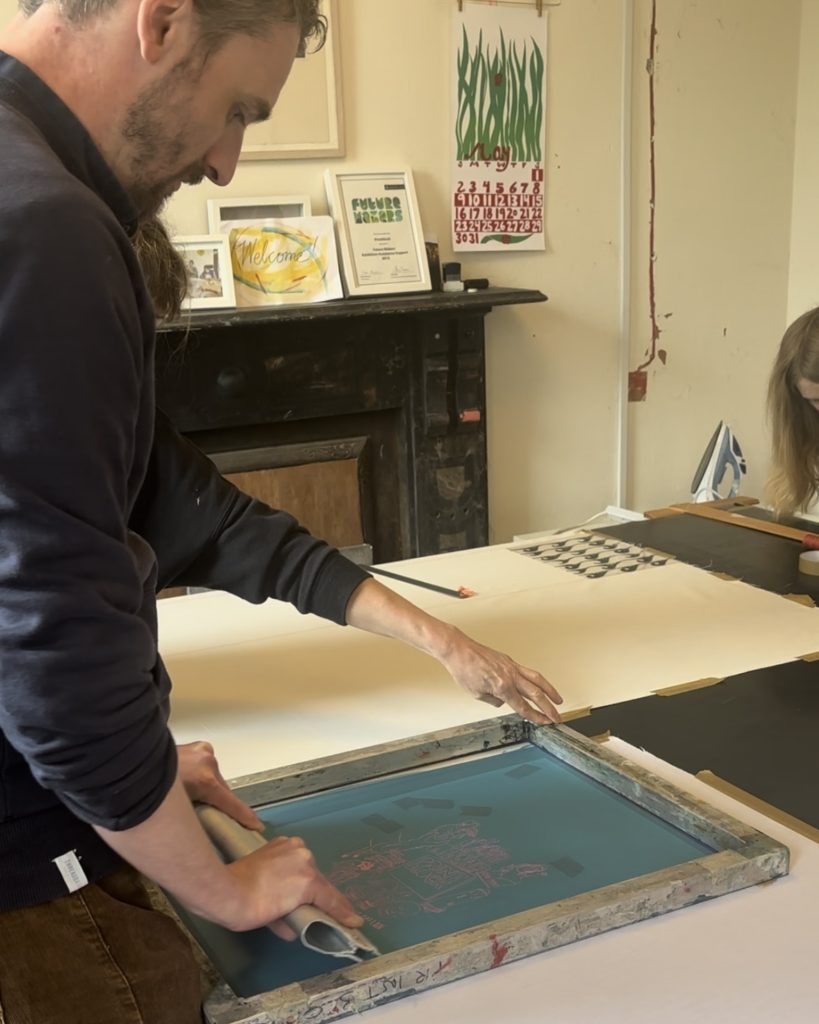
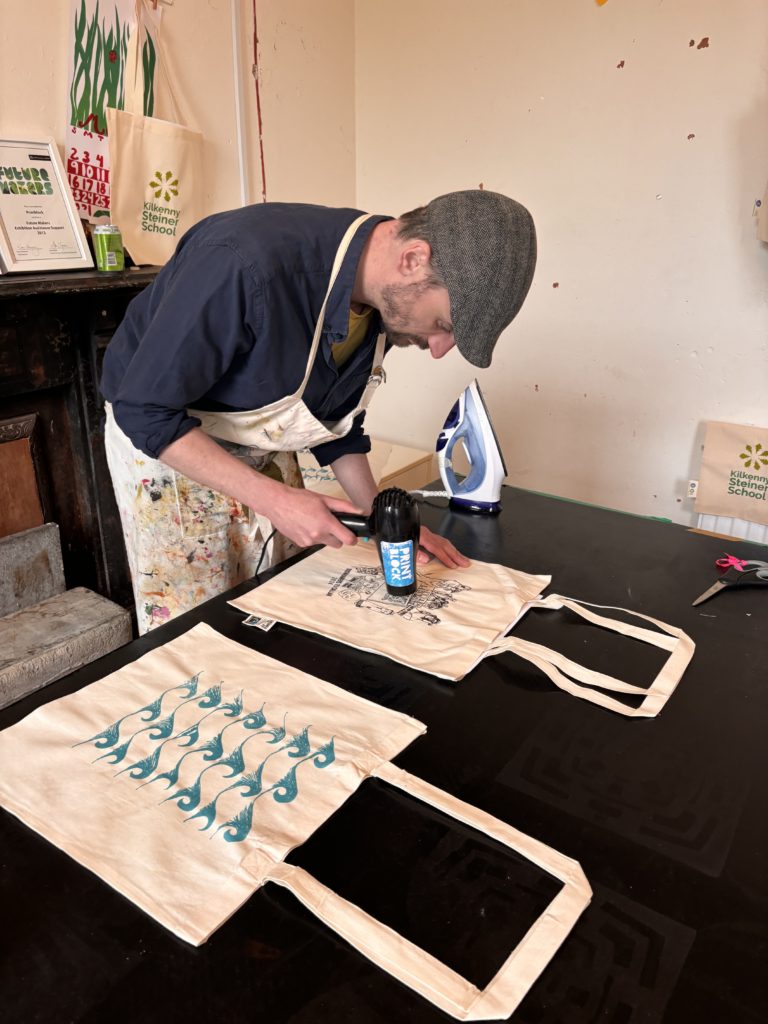
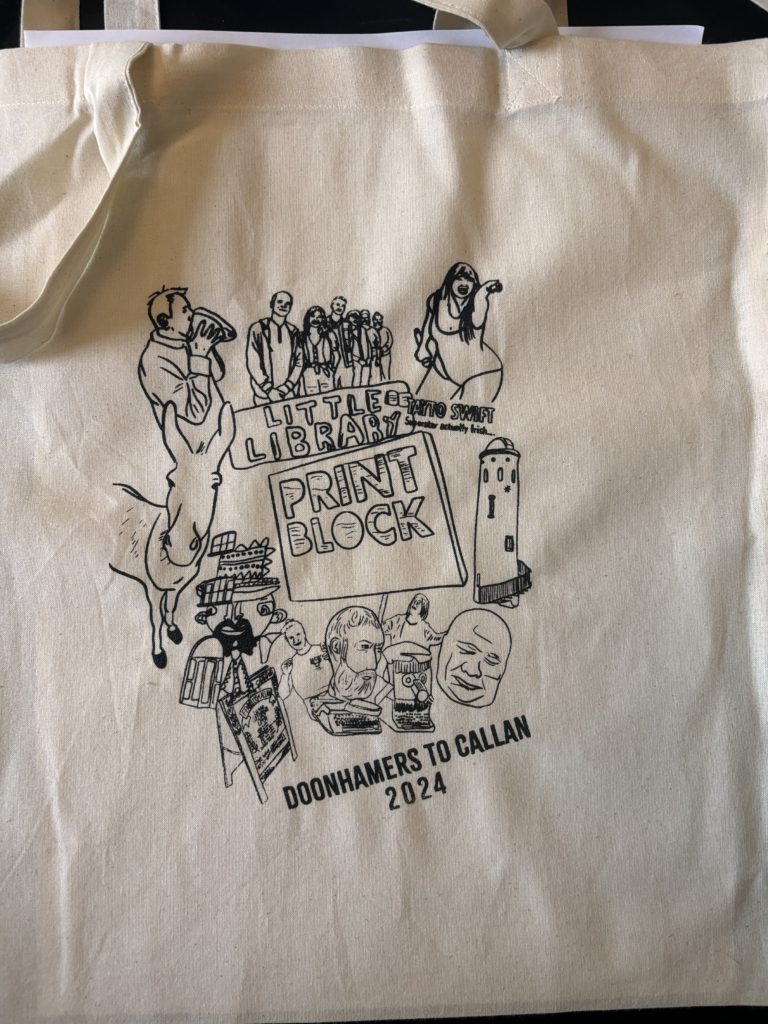
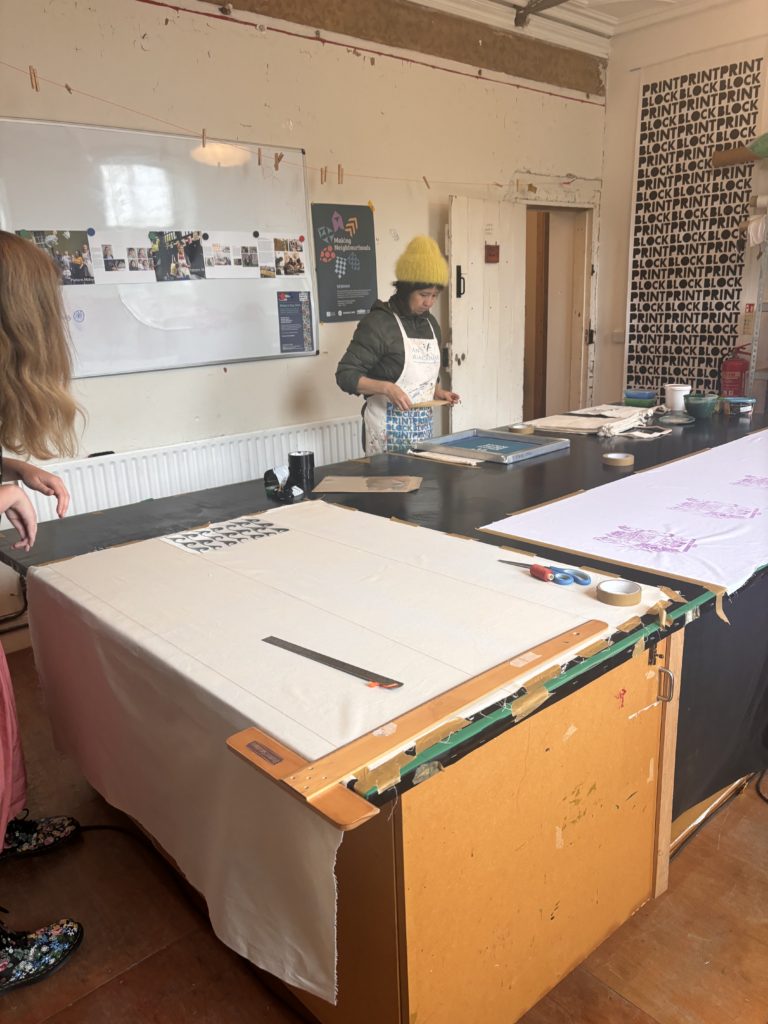
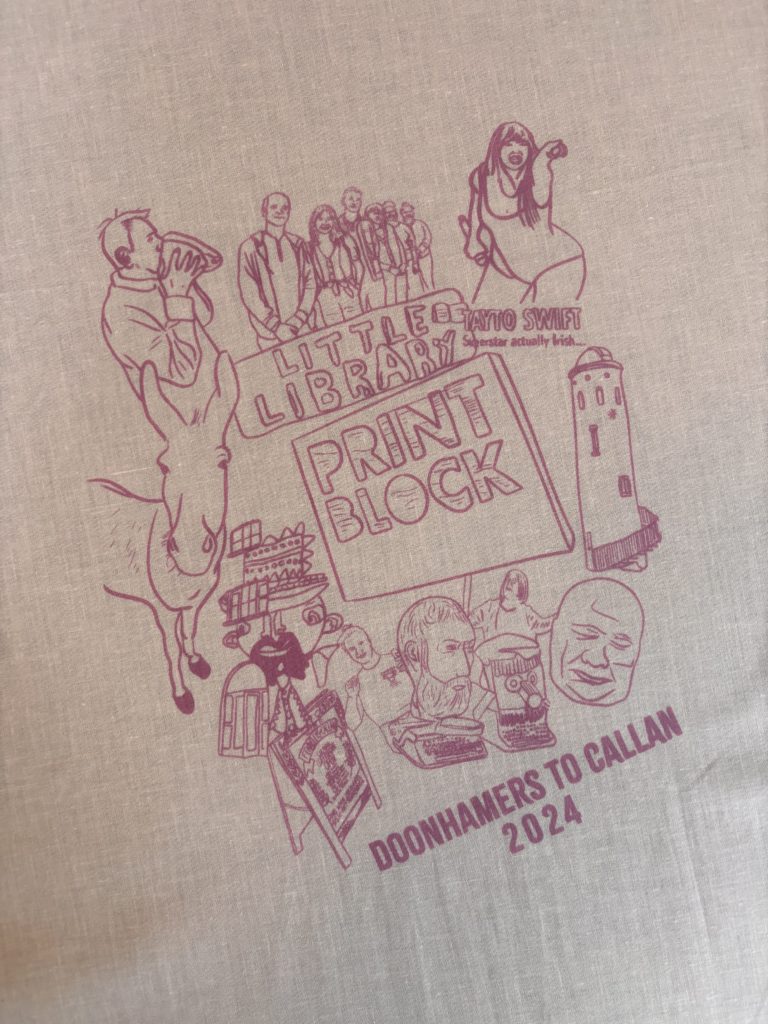
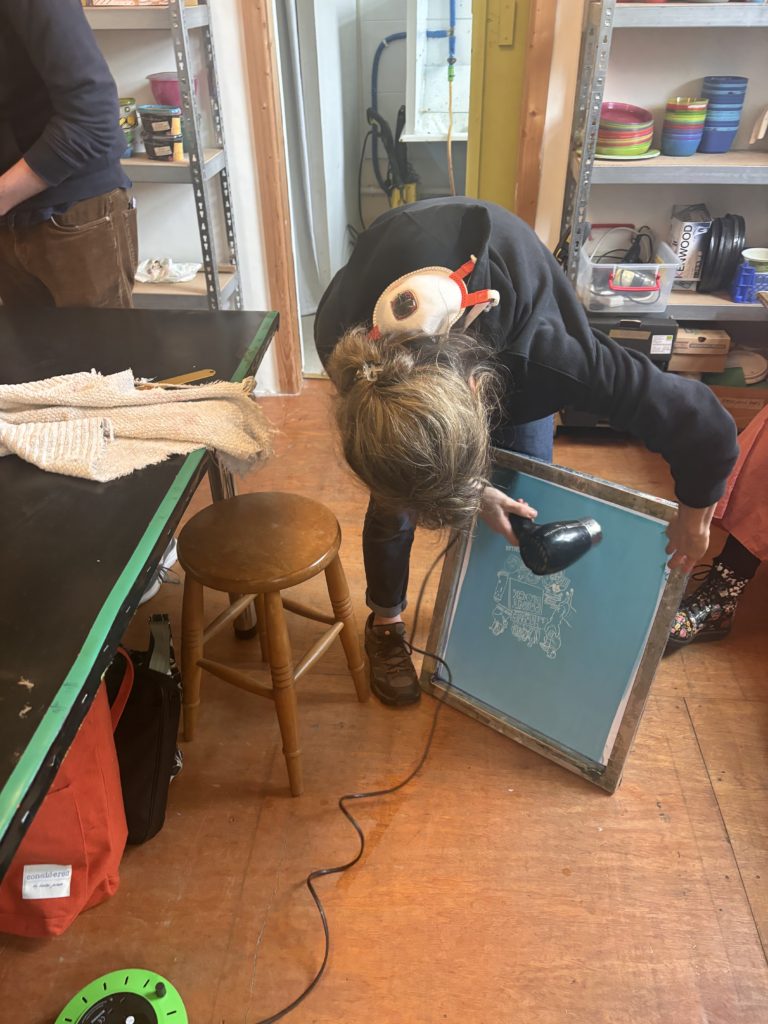
We printed our design onto fabric first – learning the intricate mechanics of screen-printing from Michelle before graduating onto tote bags. Whilst printing and chatting with the other attendees, you again got a sense of the engaged community Workhouse Union has created in their corner of Callan and beyond.
To summarise my experience of the learning exchange, it is clear that Callan is a place where creativity flourishes thanks to the community spirit that appears to permeate everything that is happening there. I could see so many examples of creative placemaking, and community-led engagement that I have learned from and taken back to our team in Dumfries. I’m looking forward to seeing the relationship between our organisations grow and adapt over the next year and beyond.
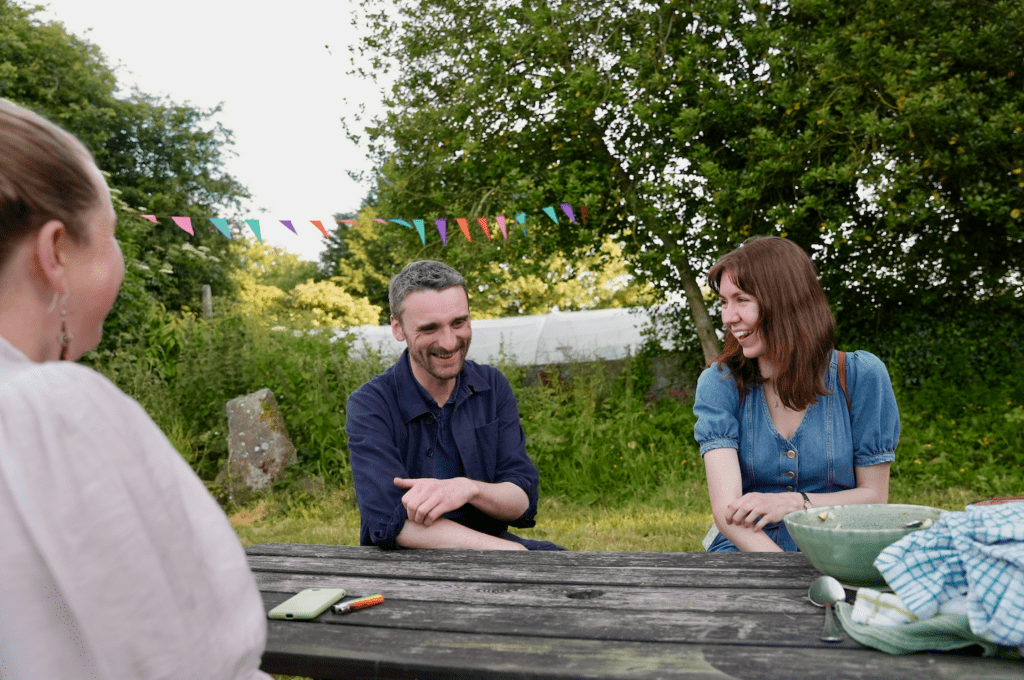
Written by Erin Aitchison
